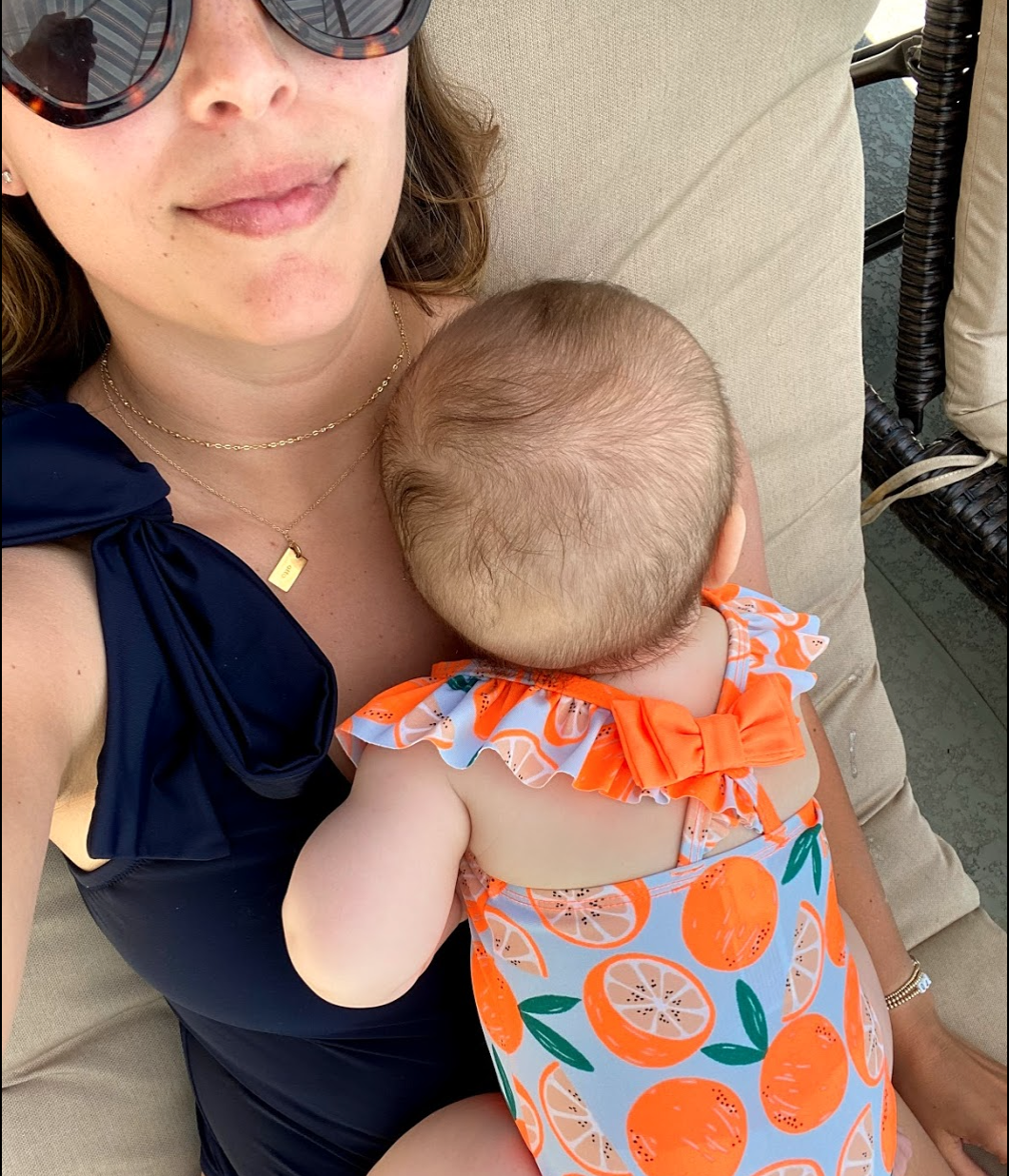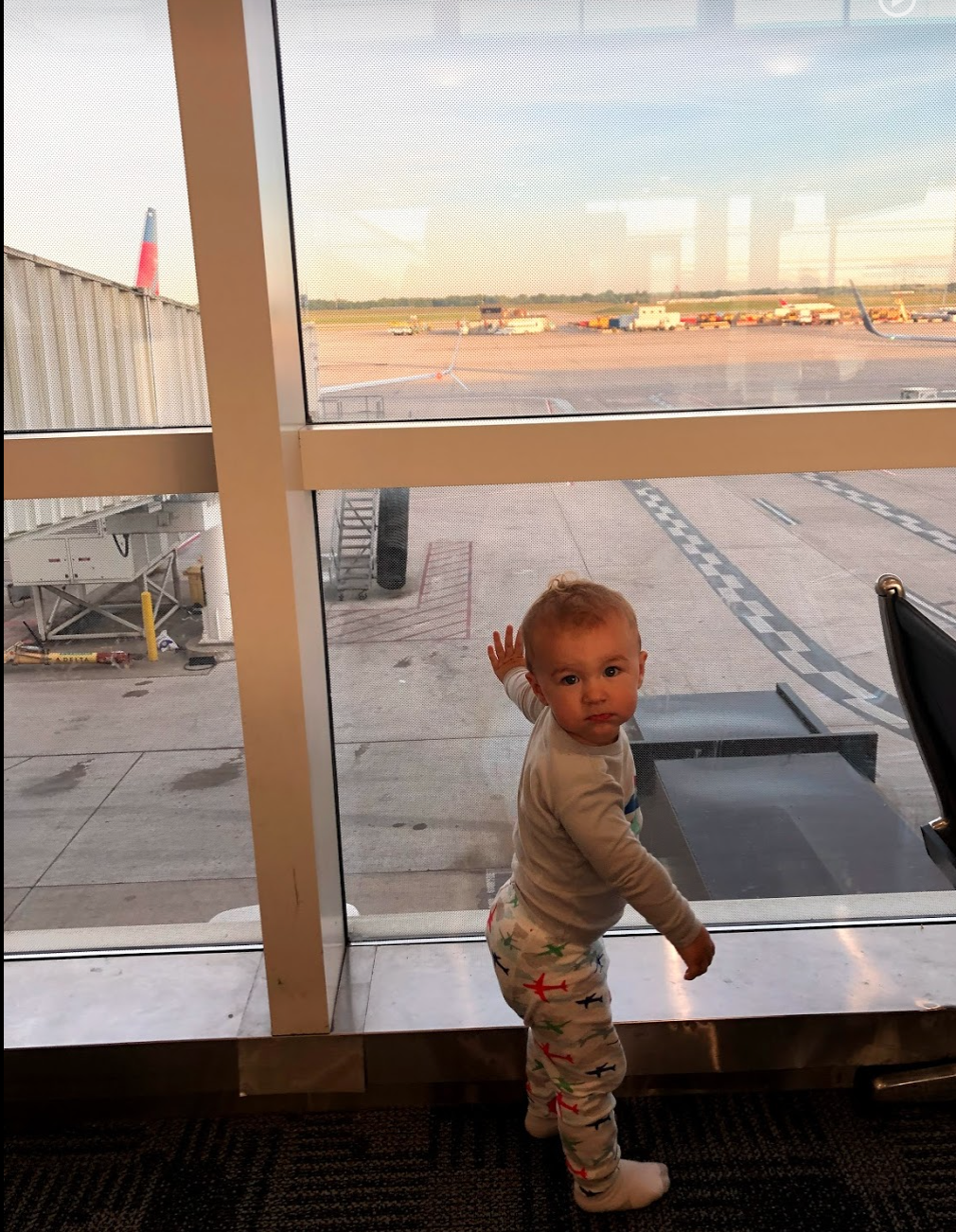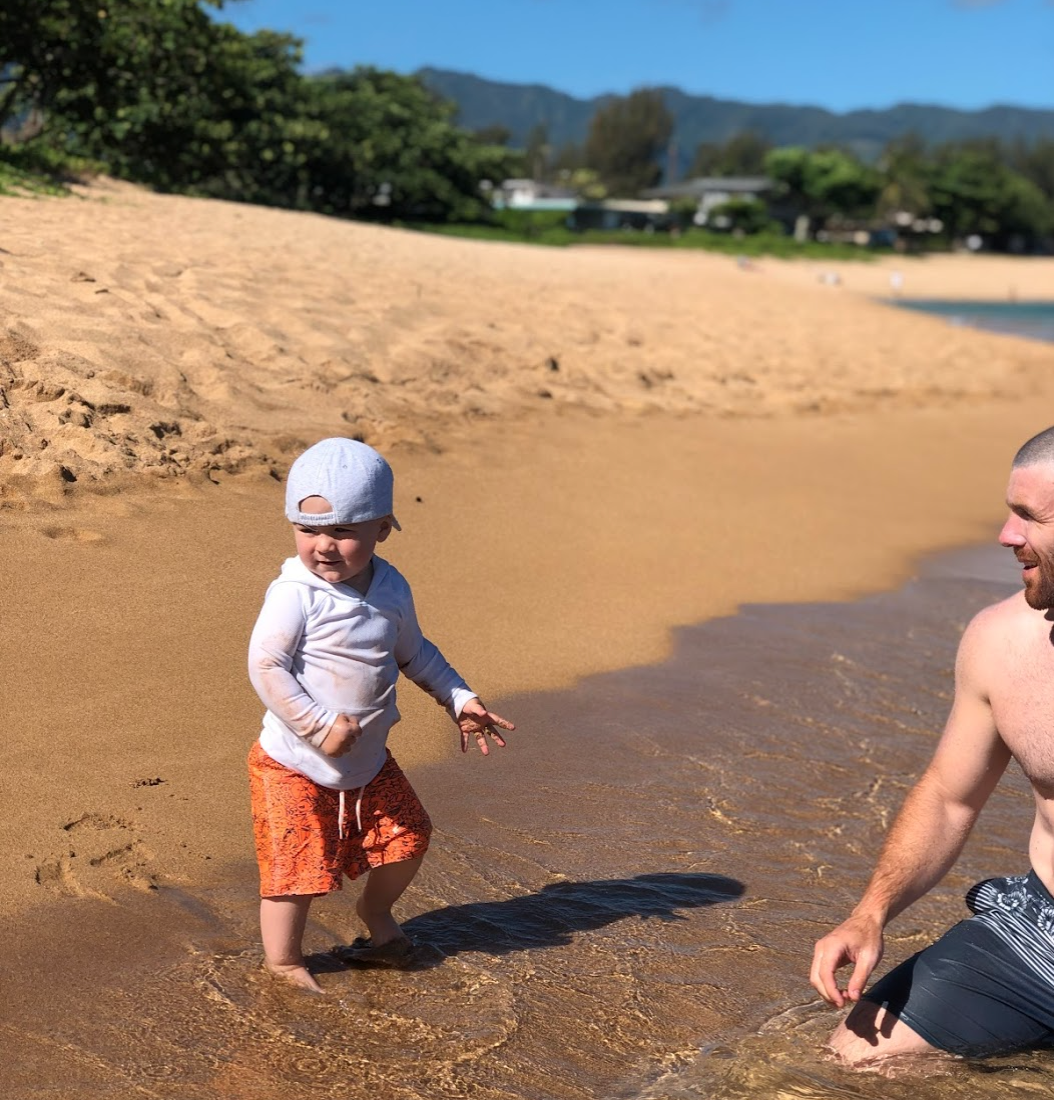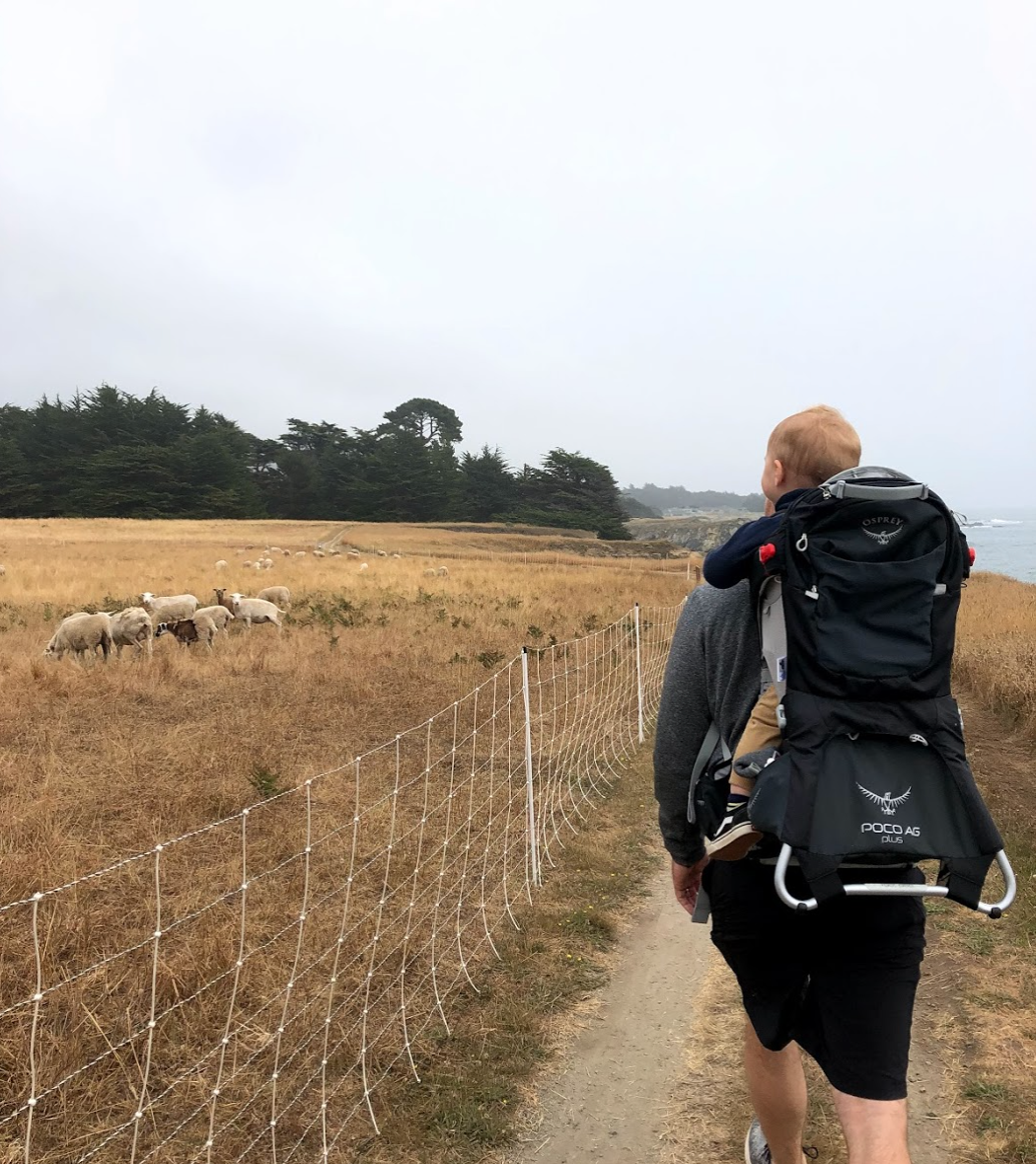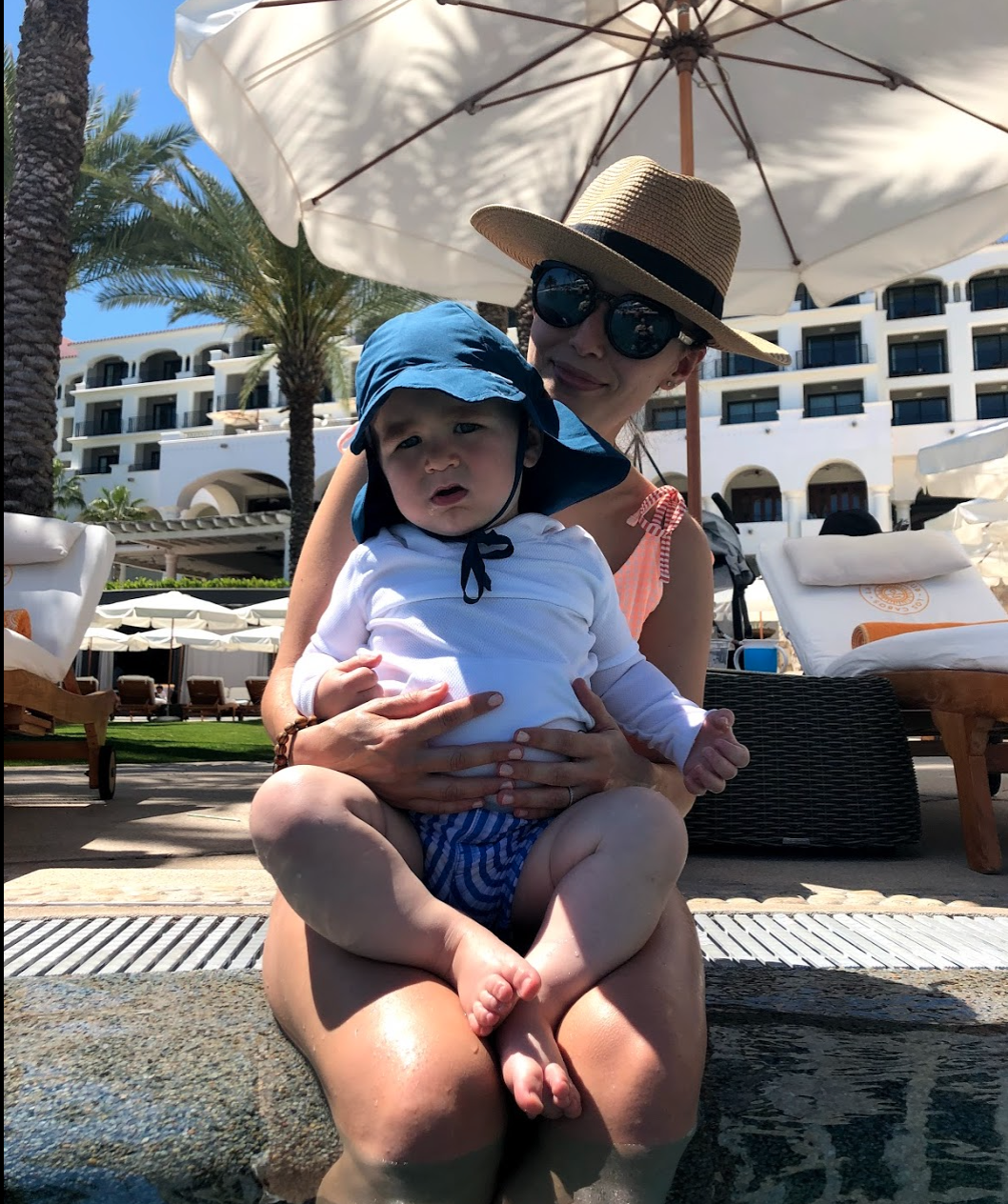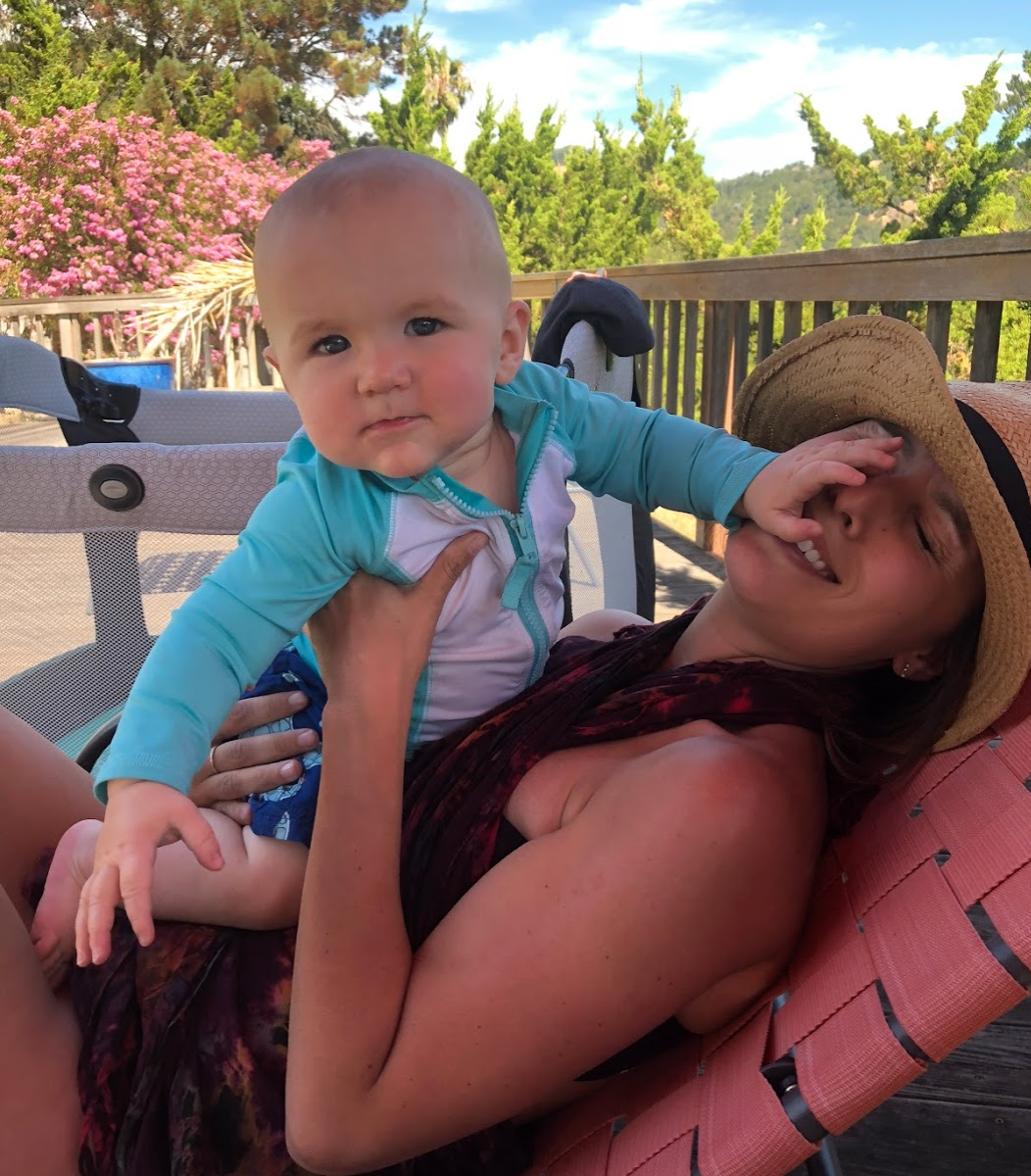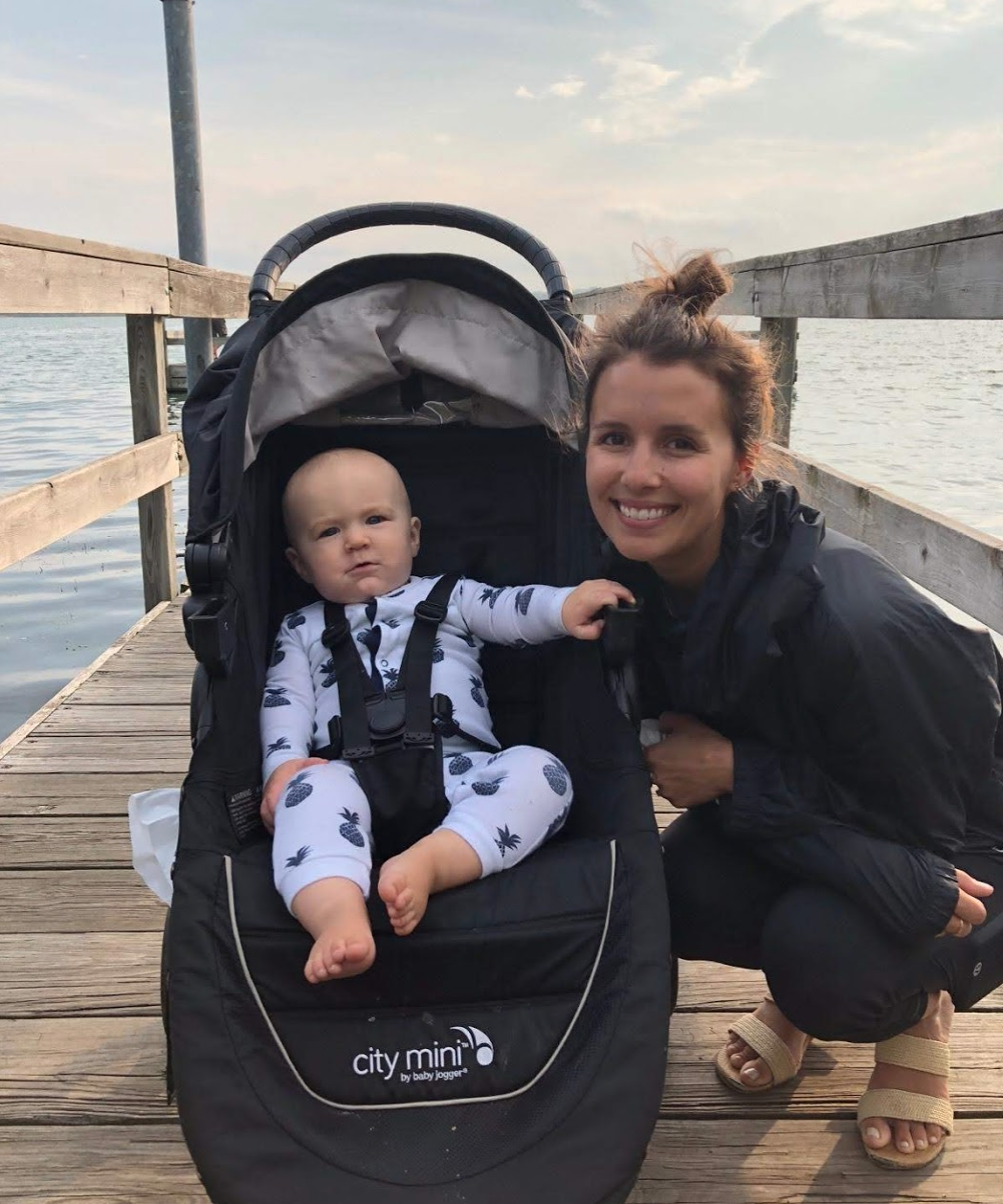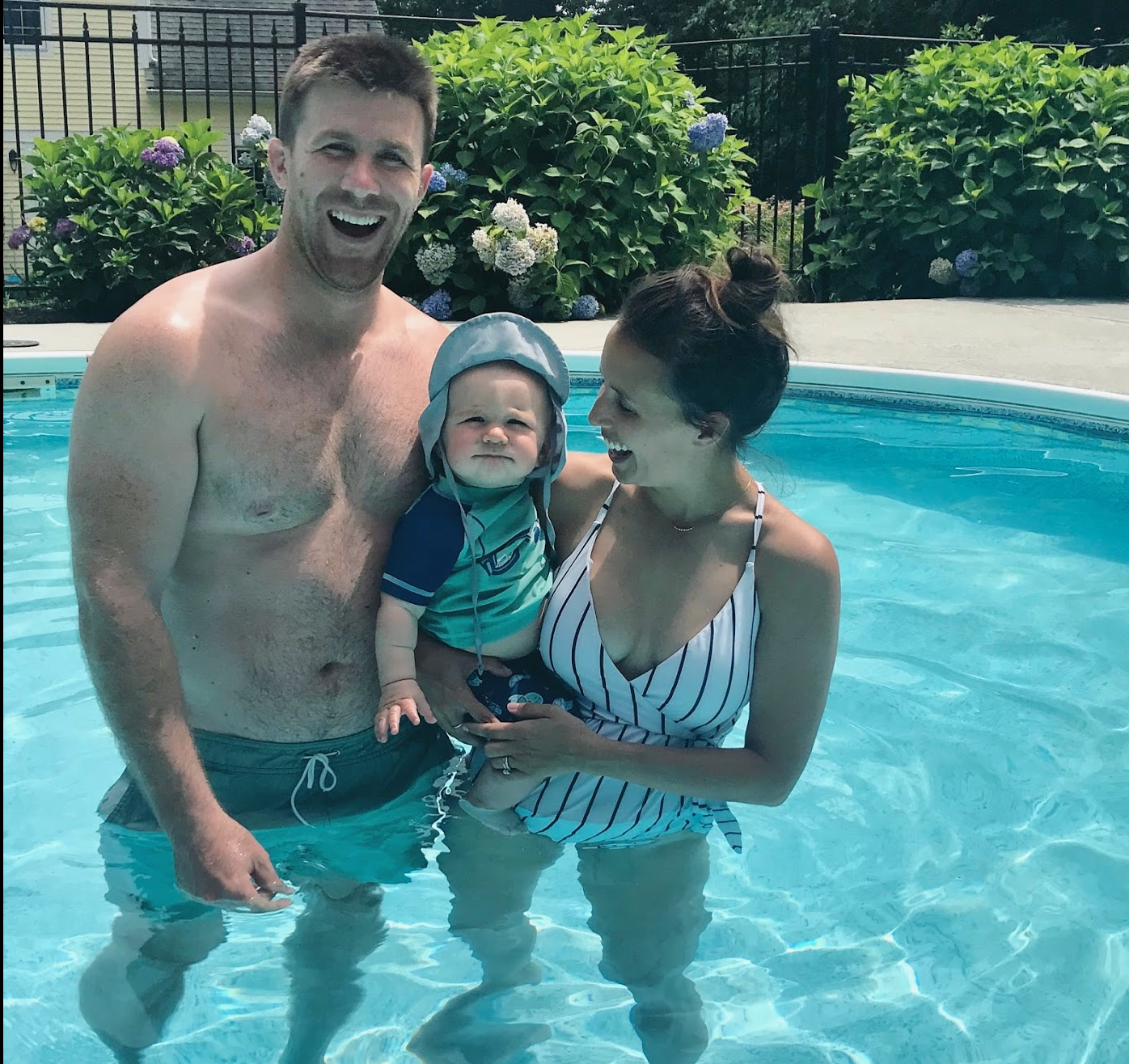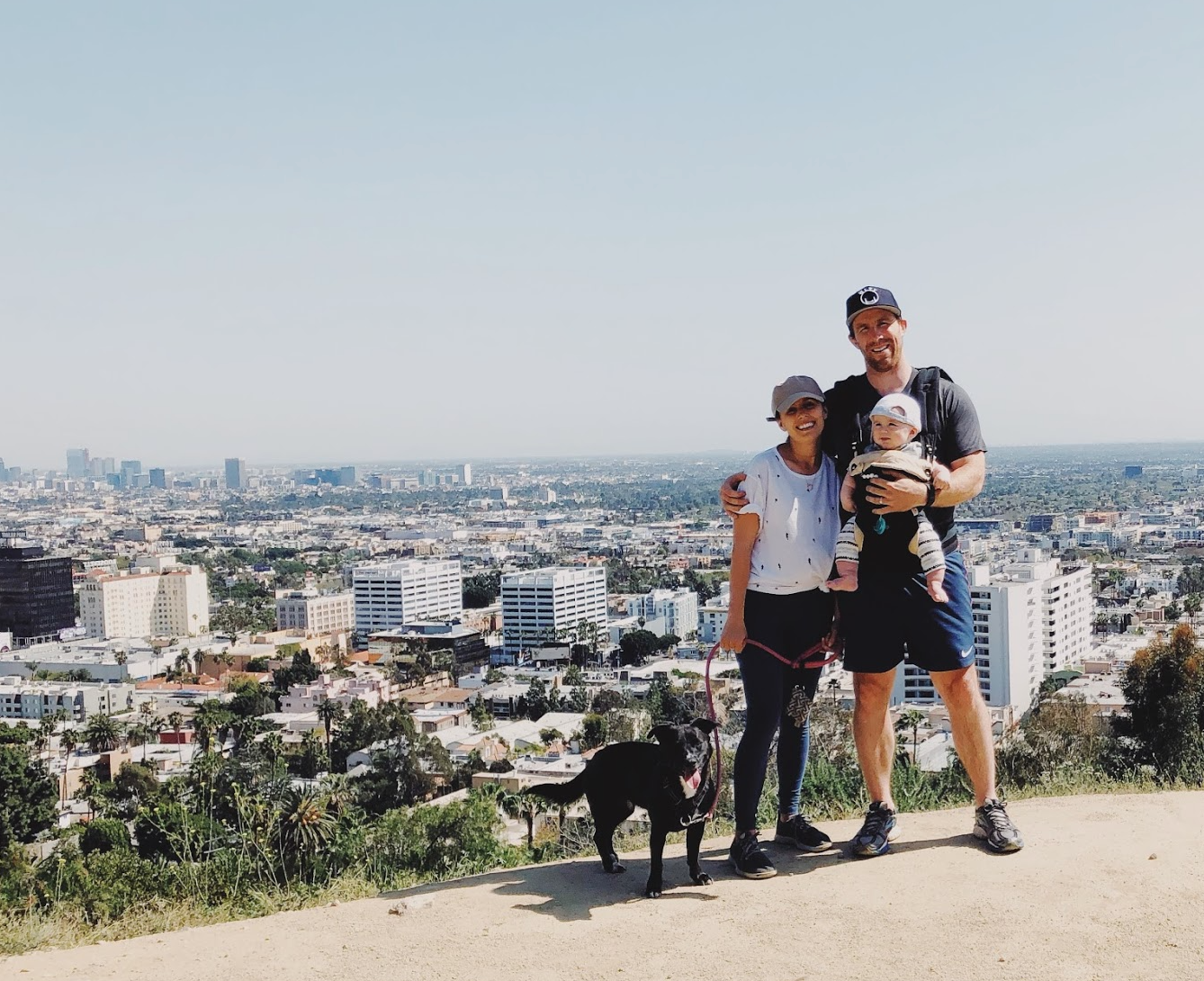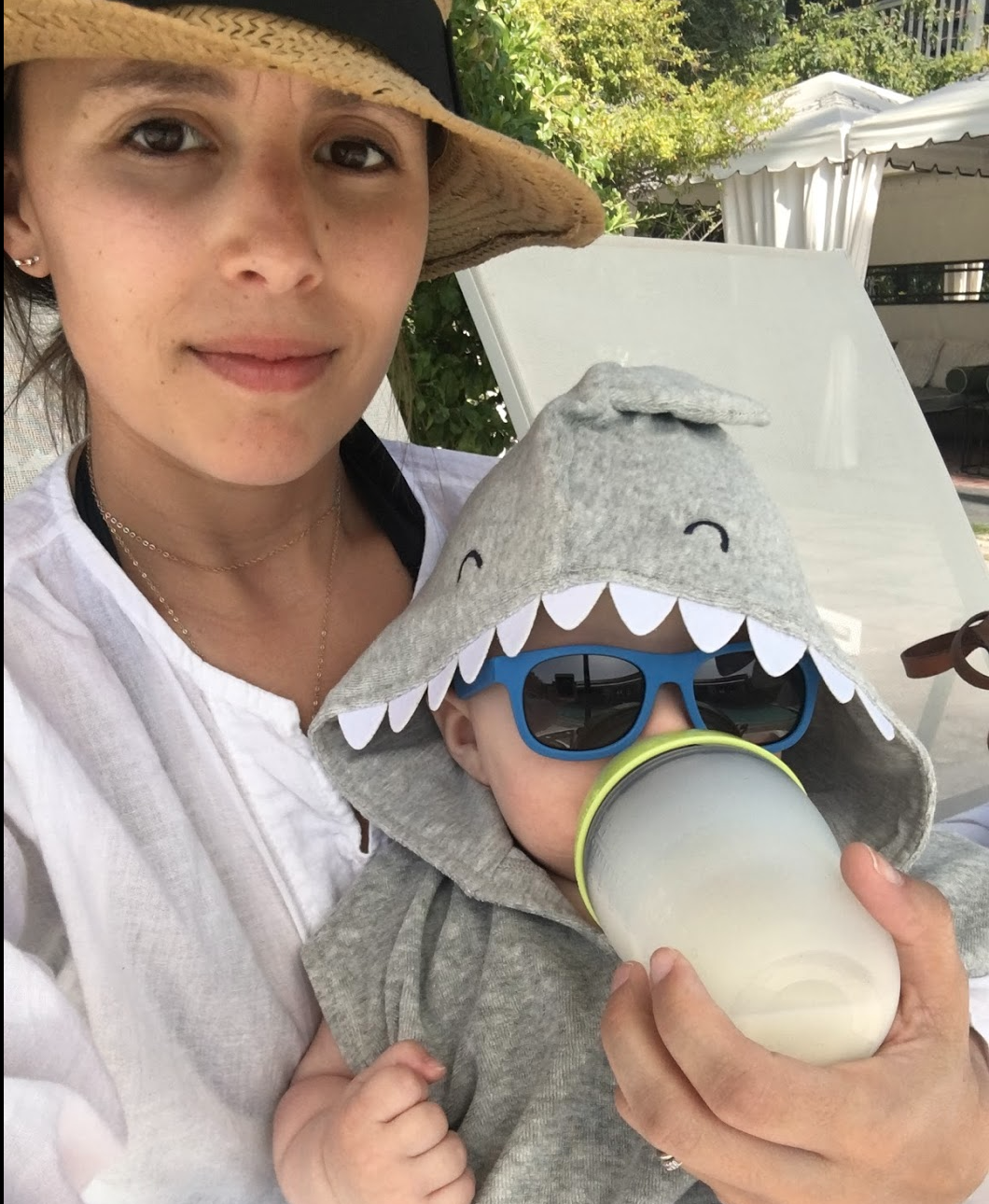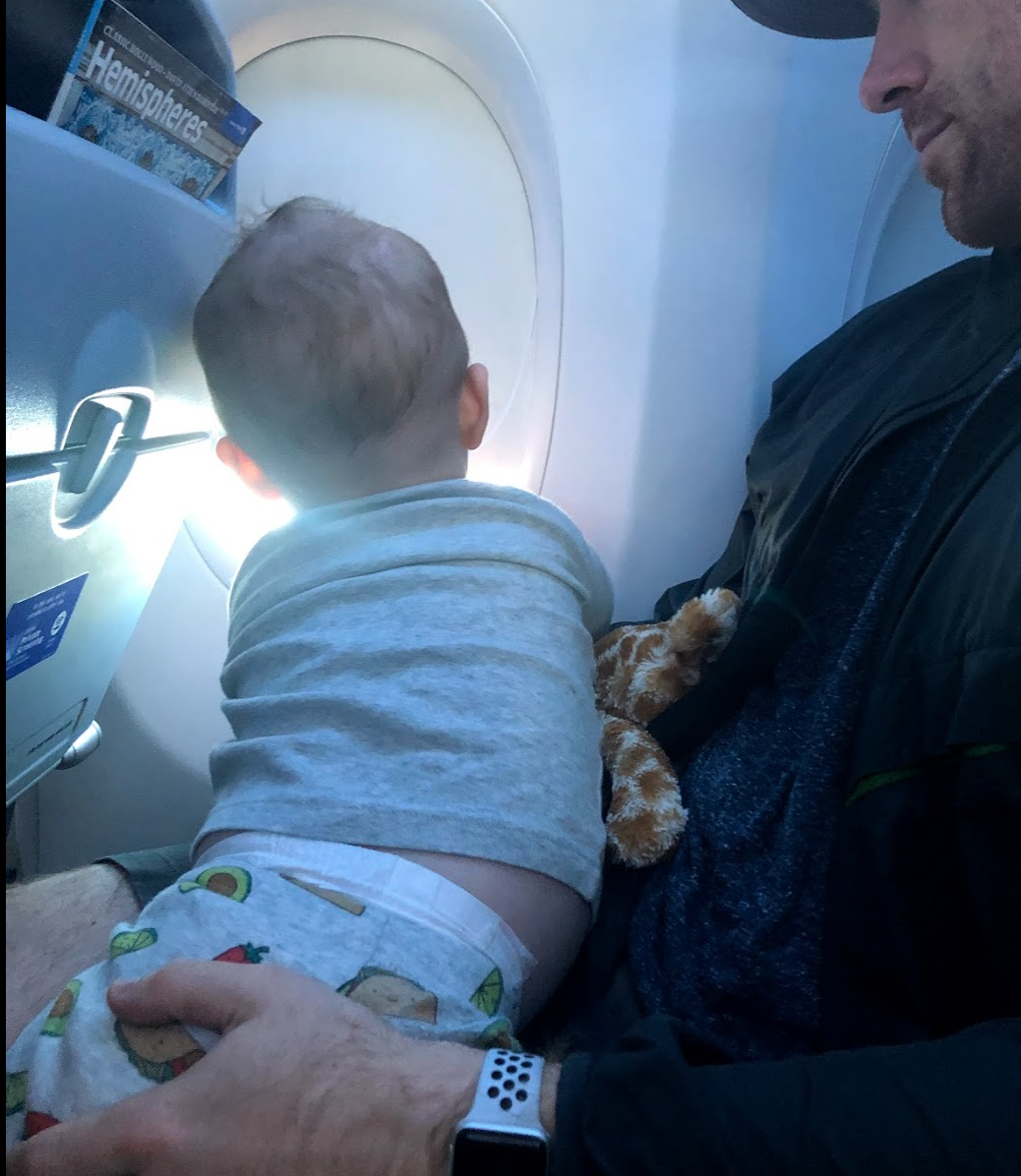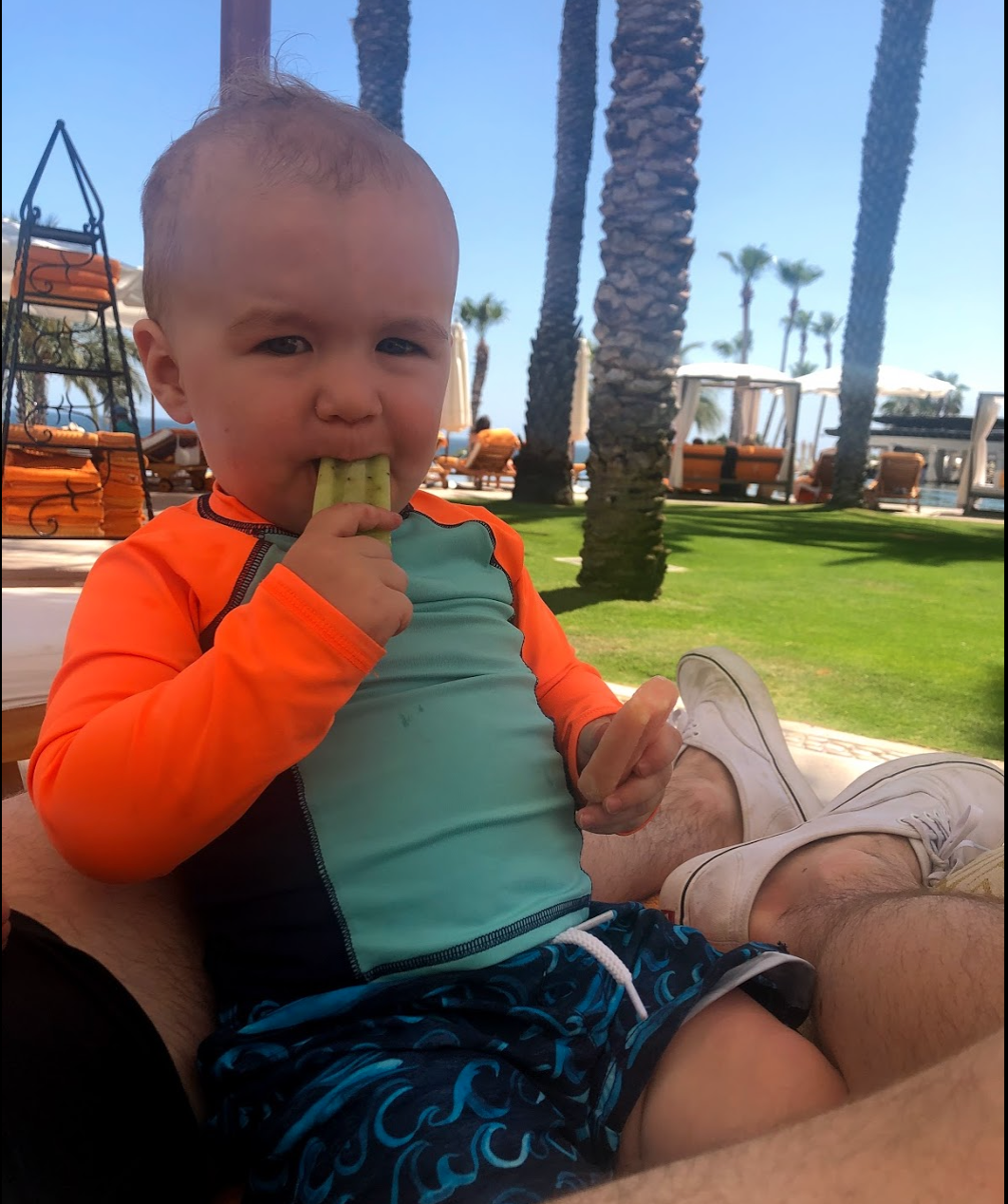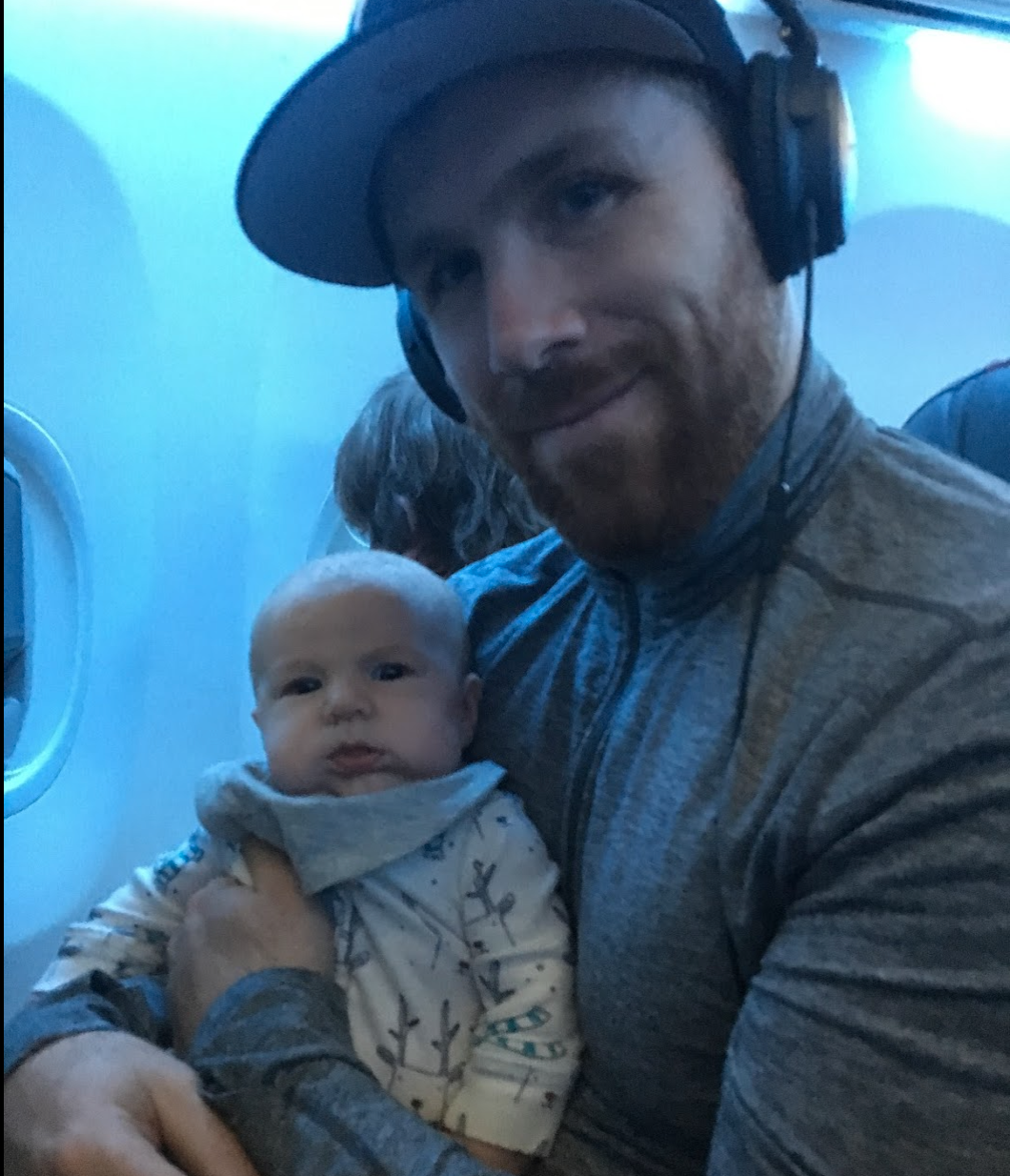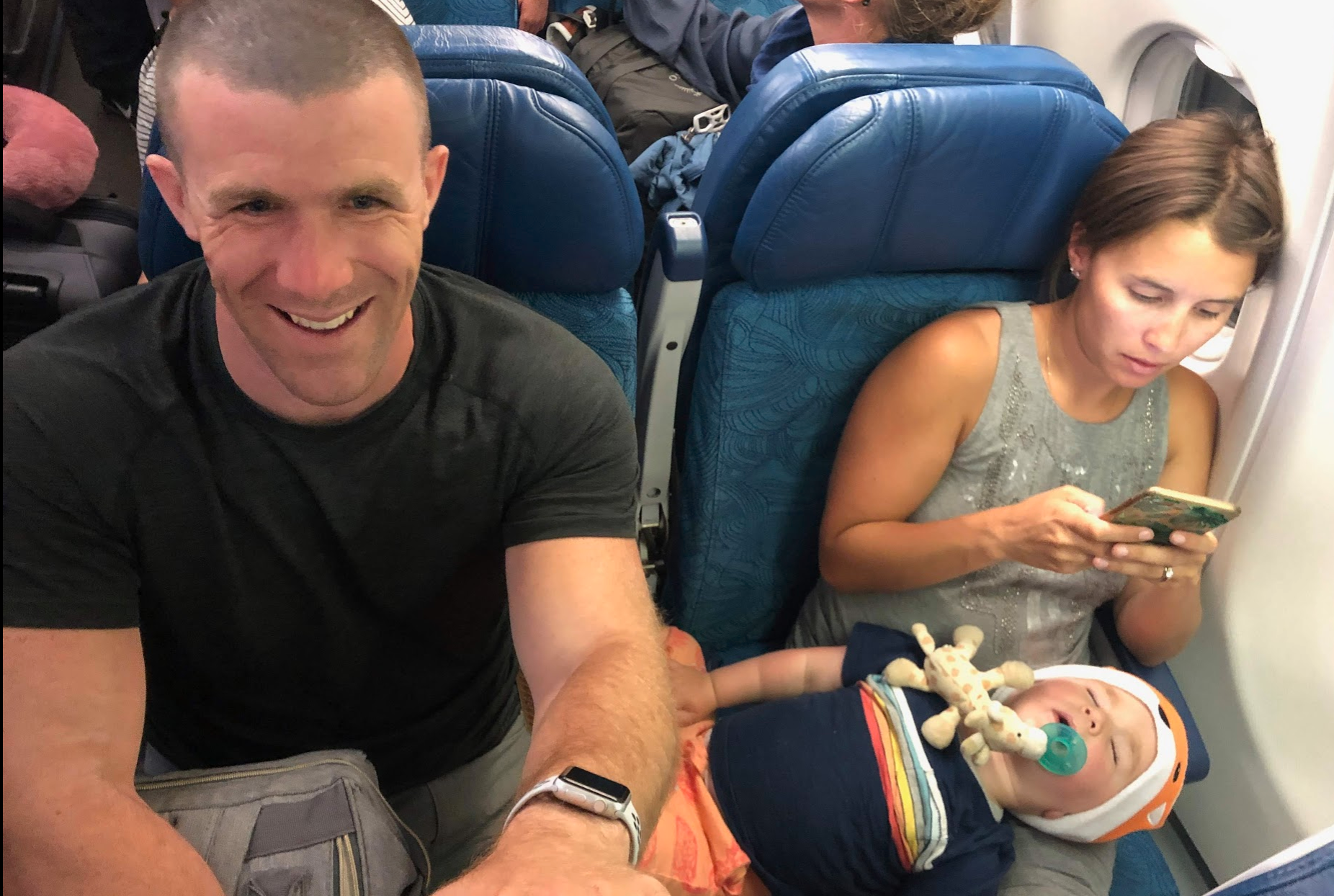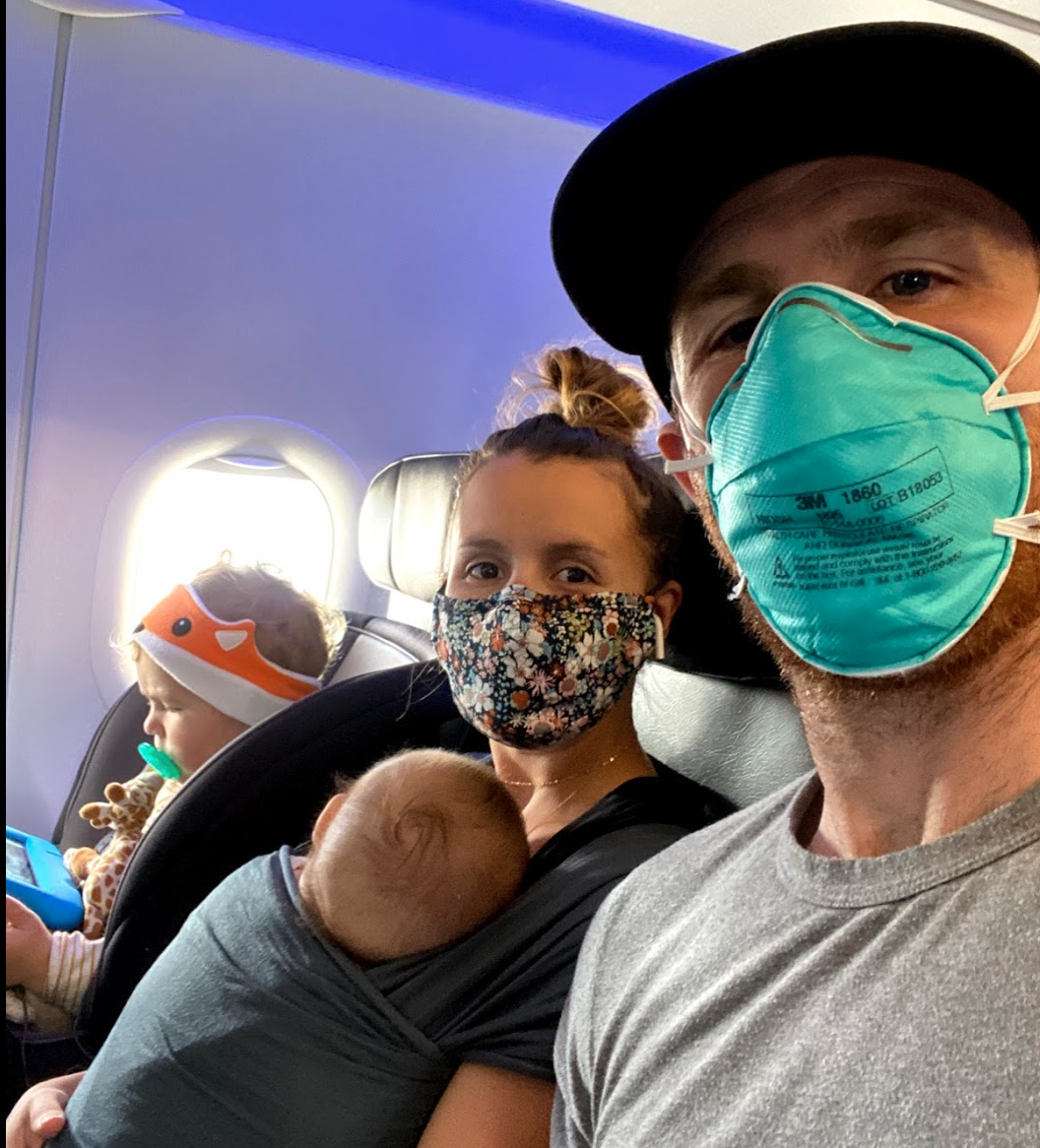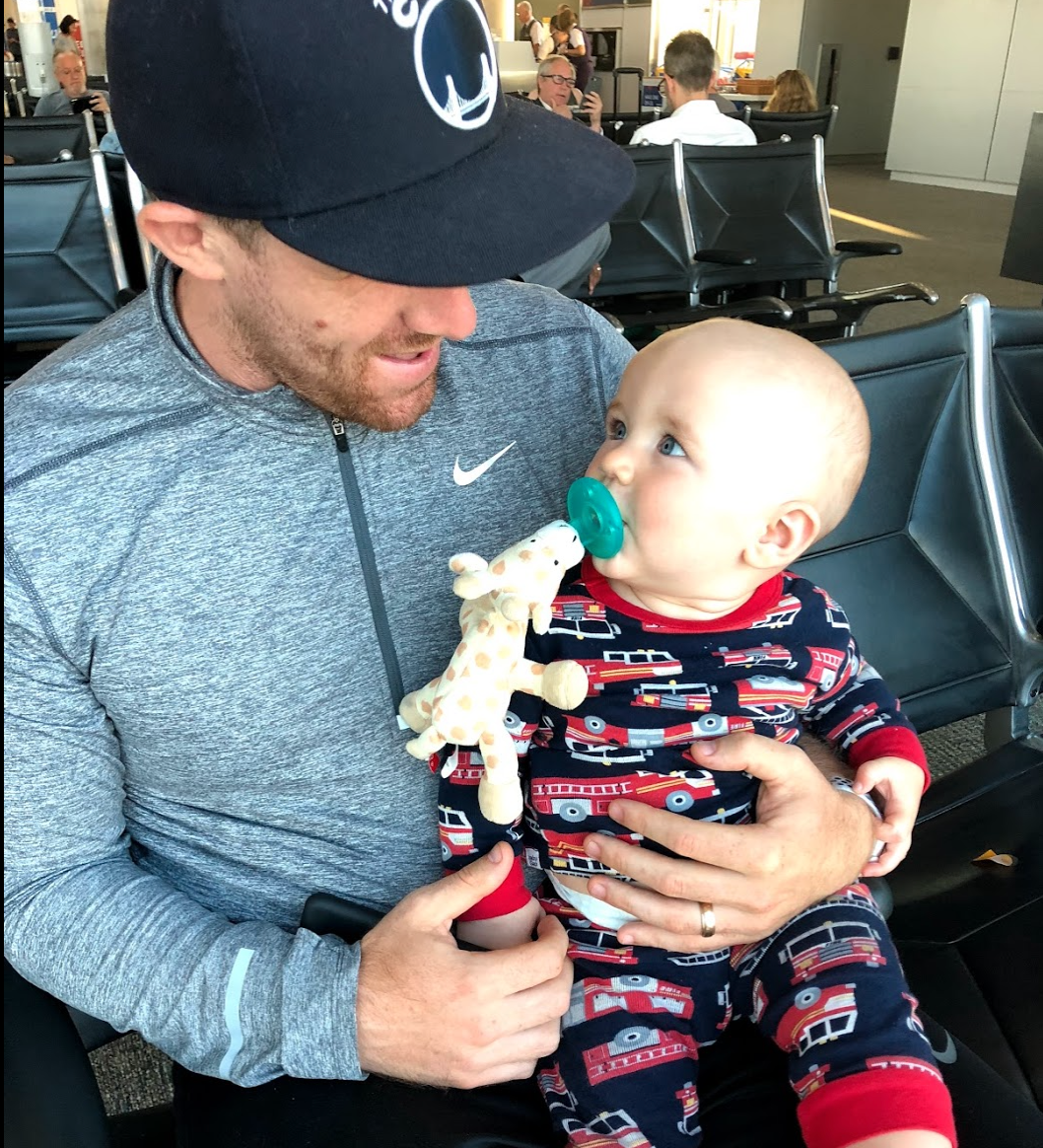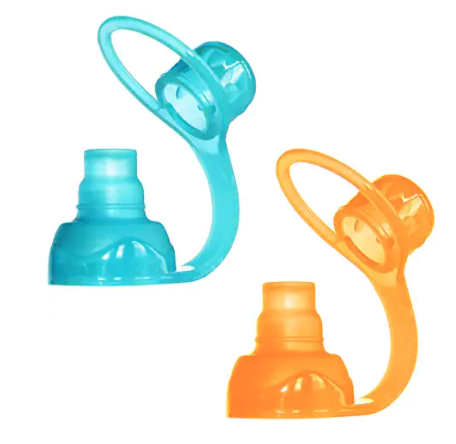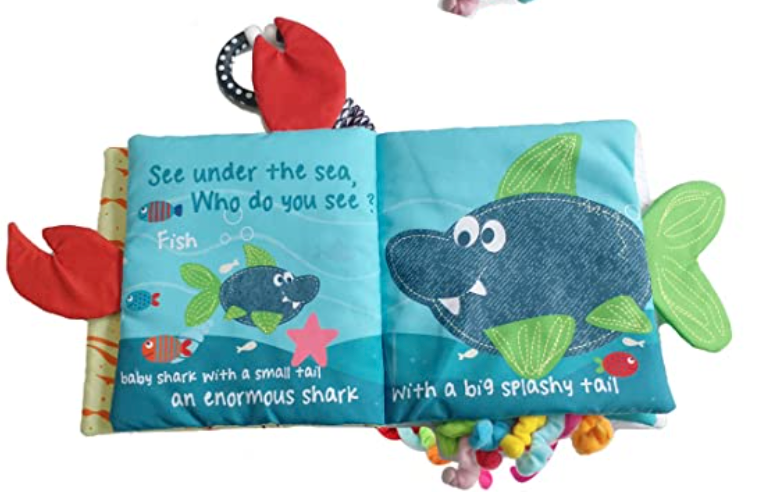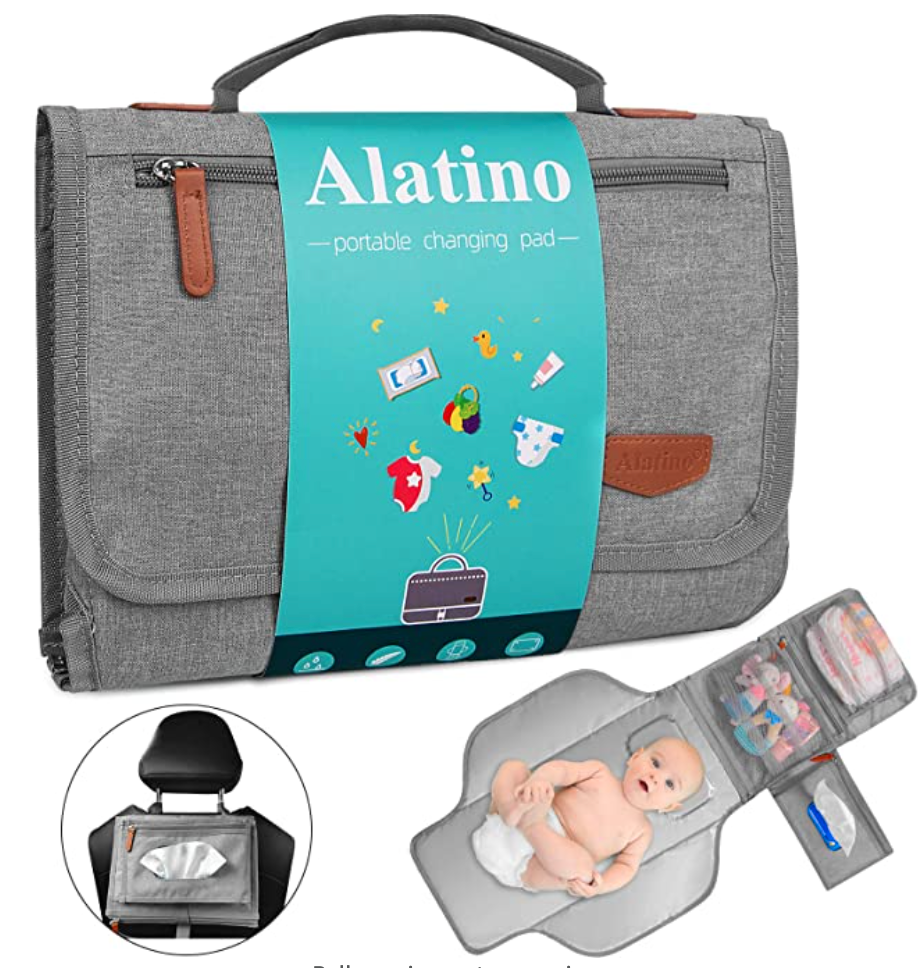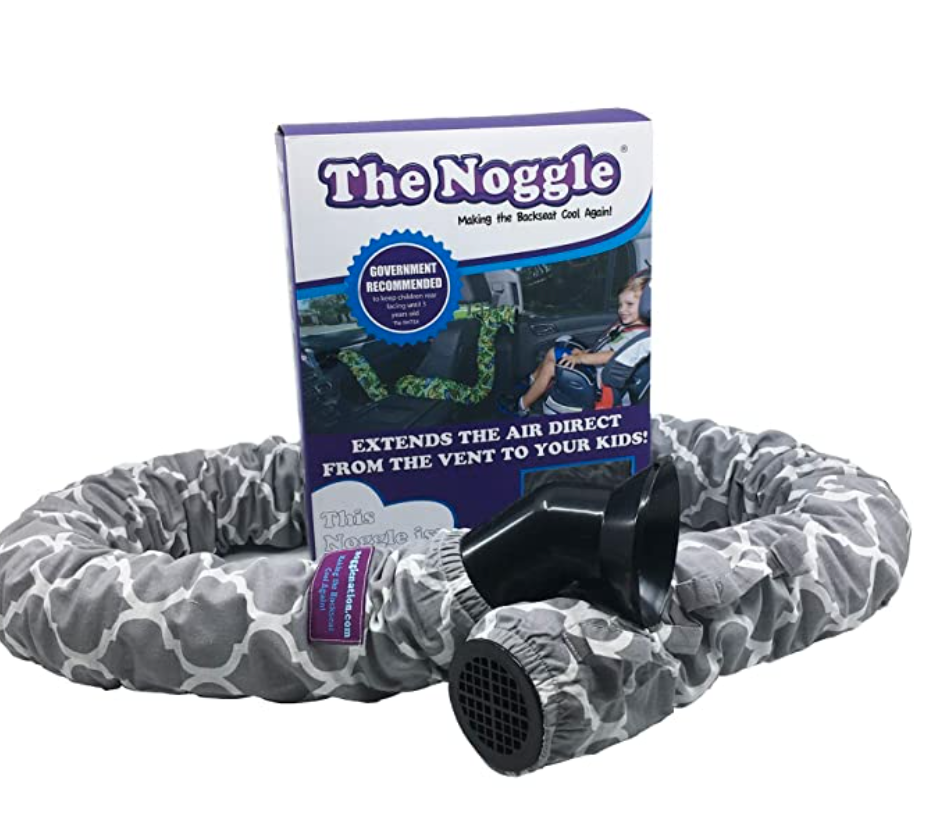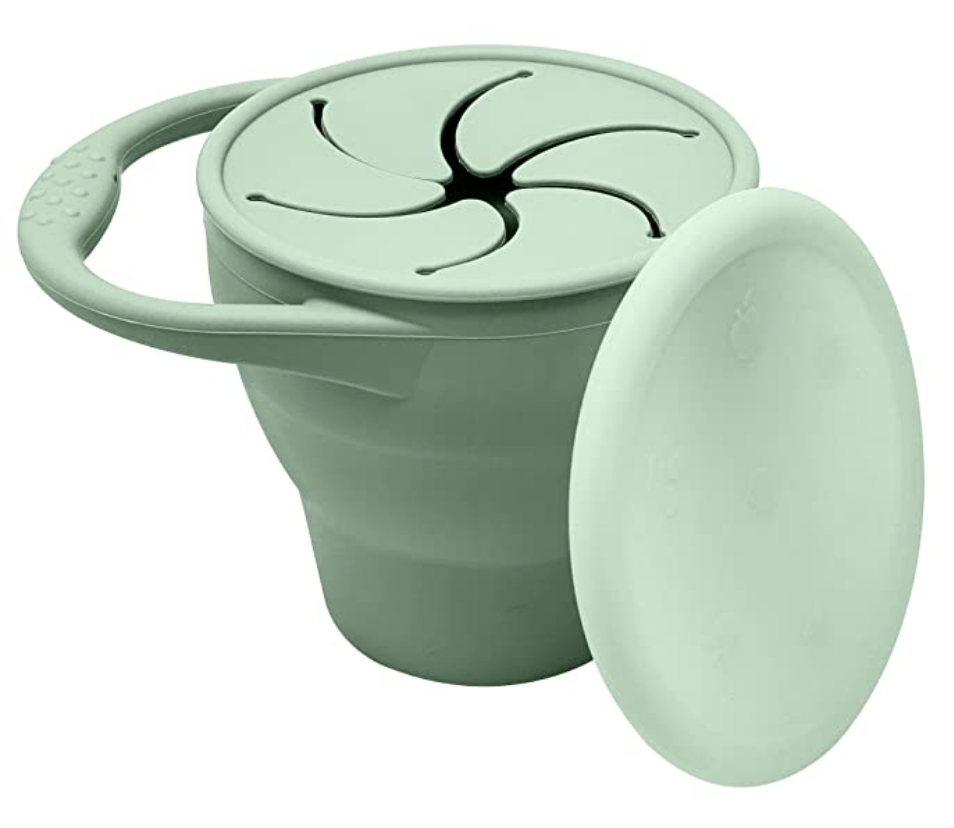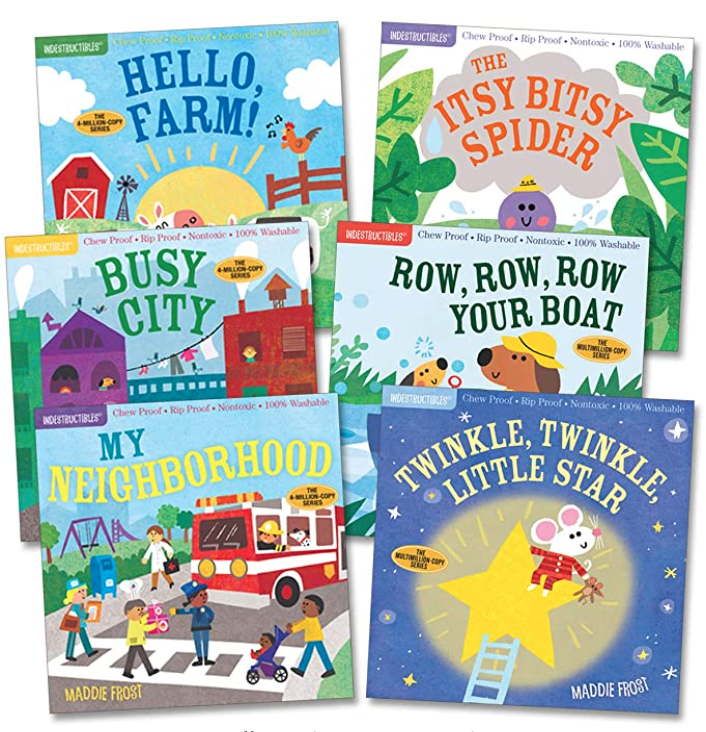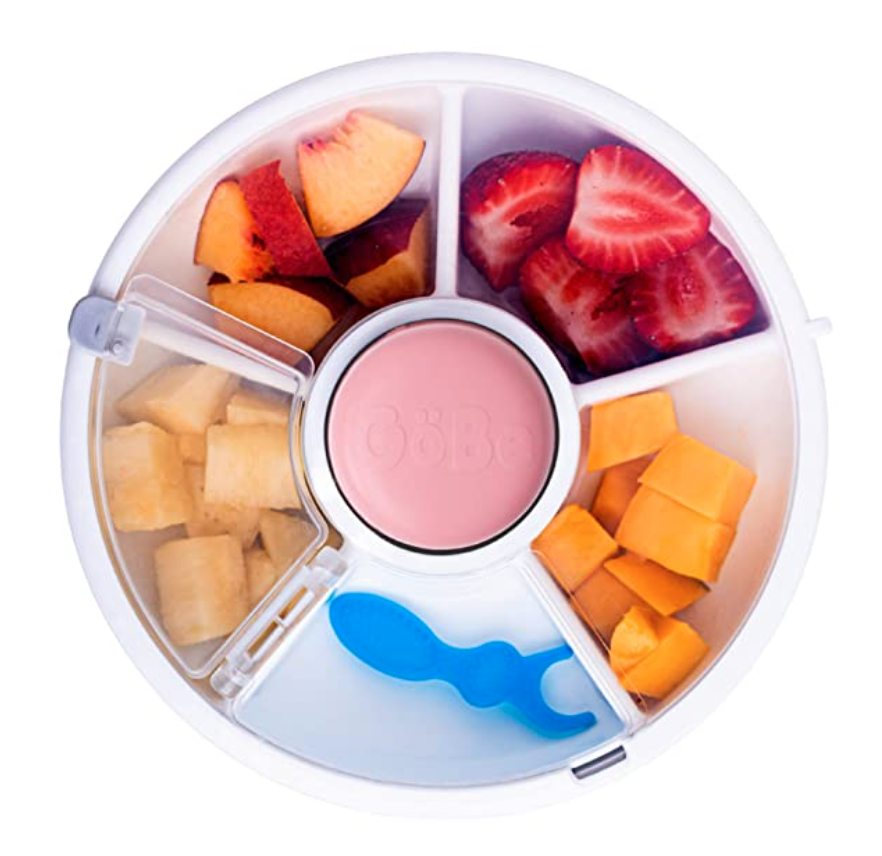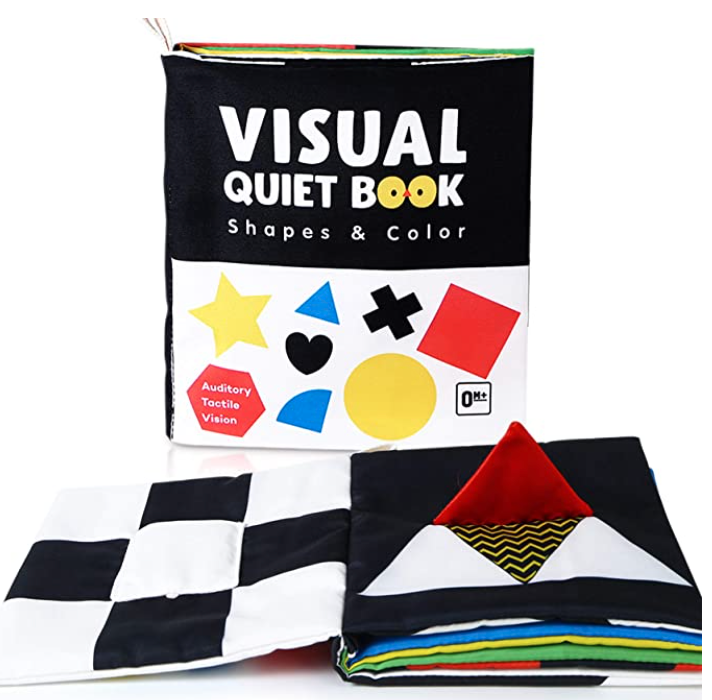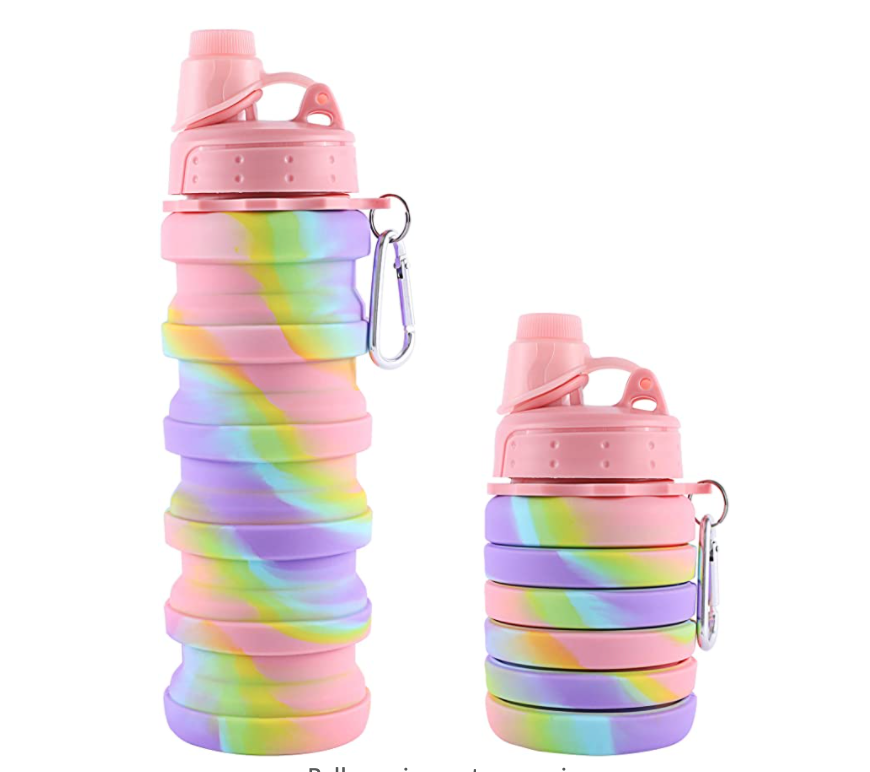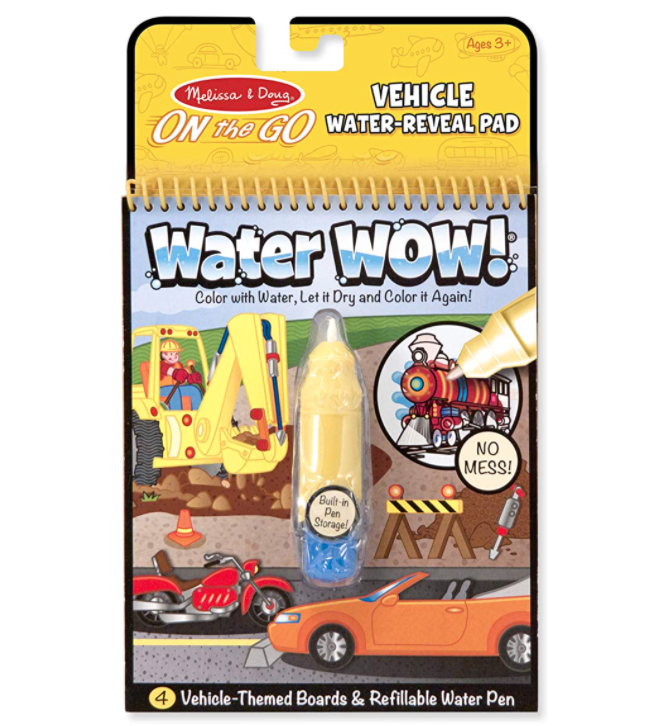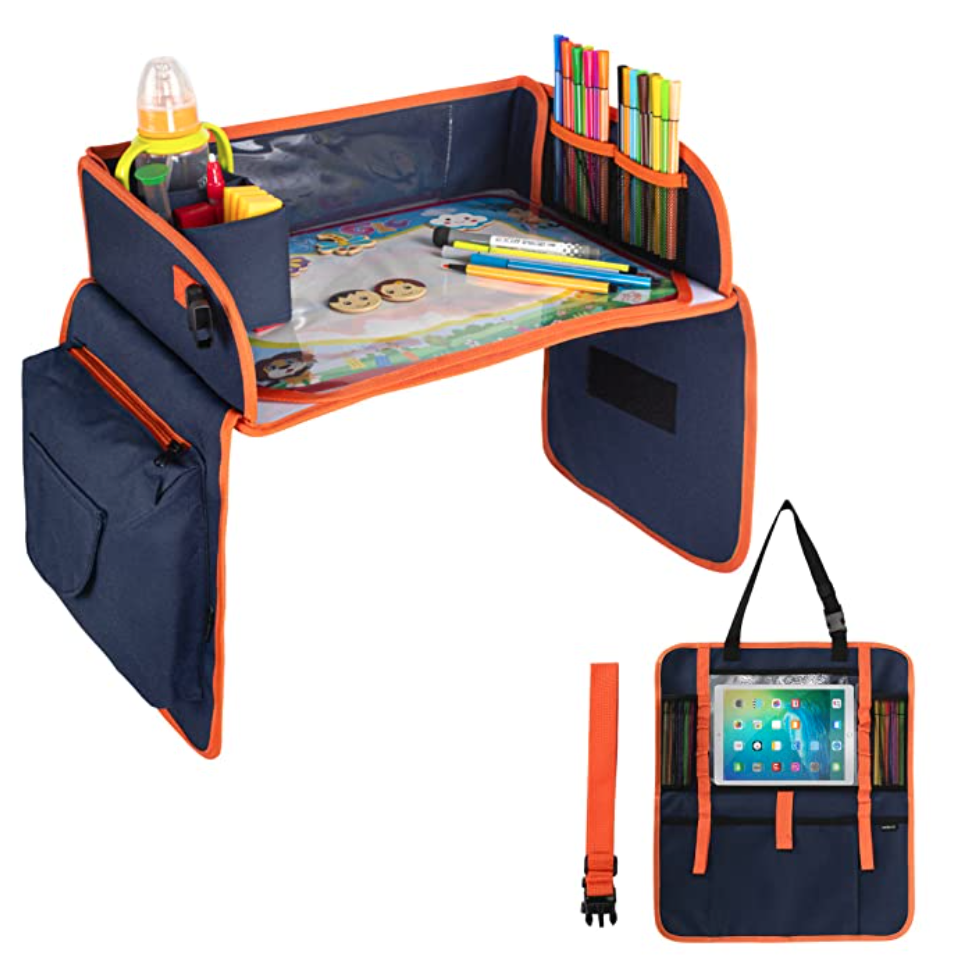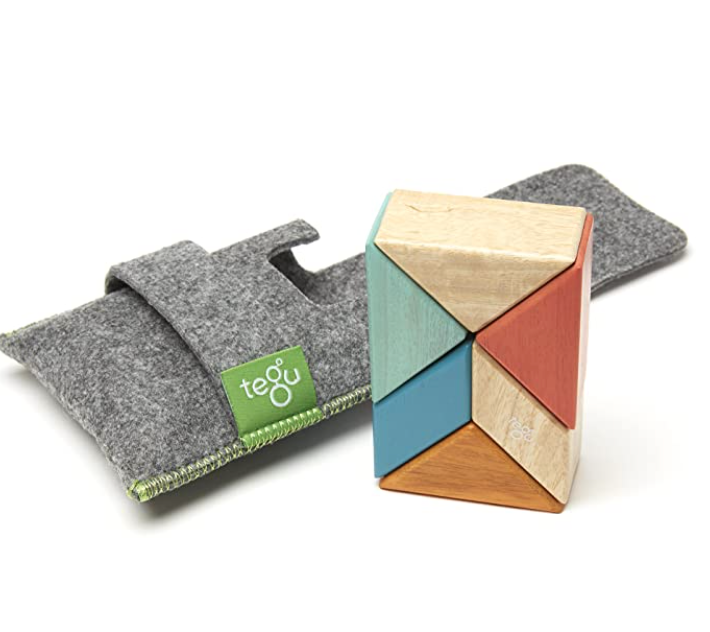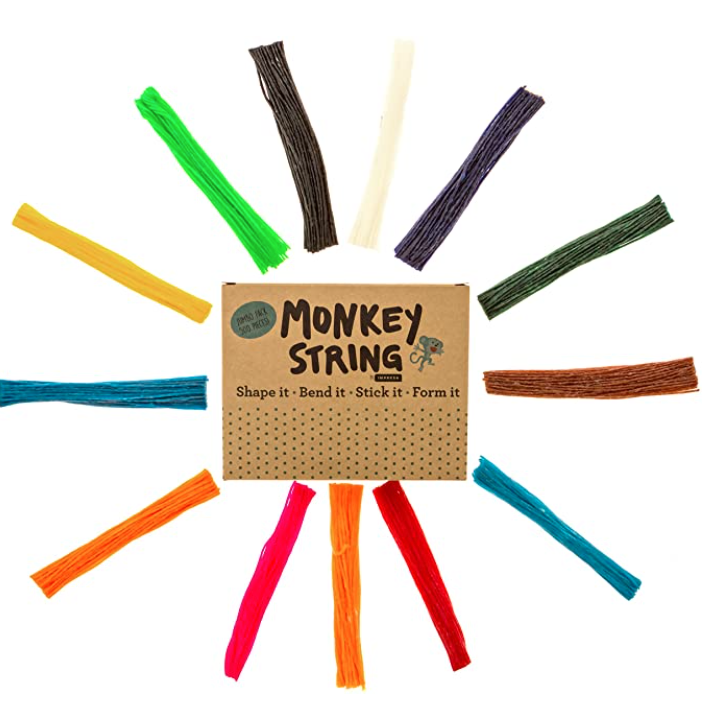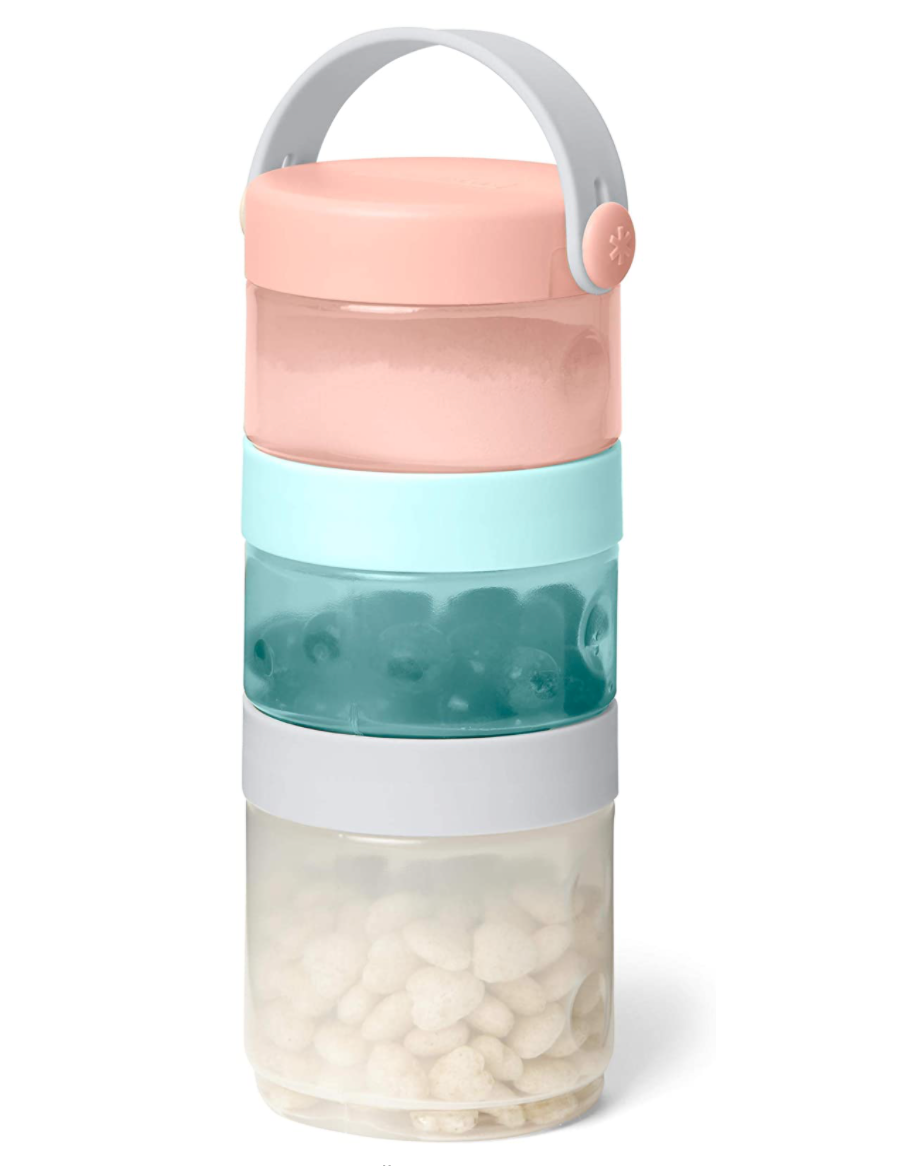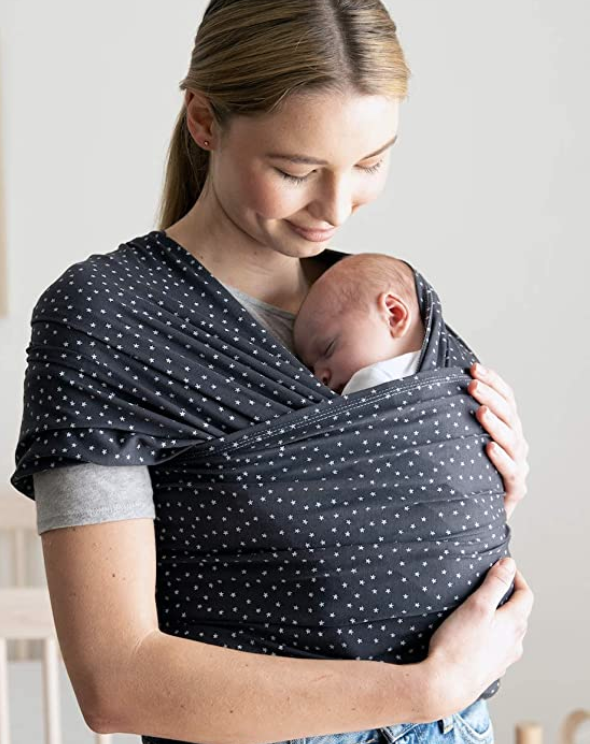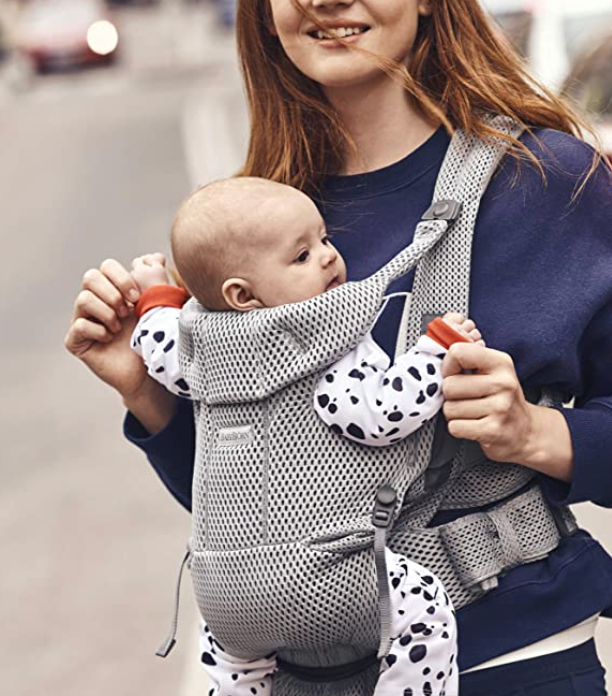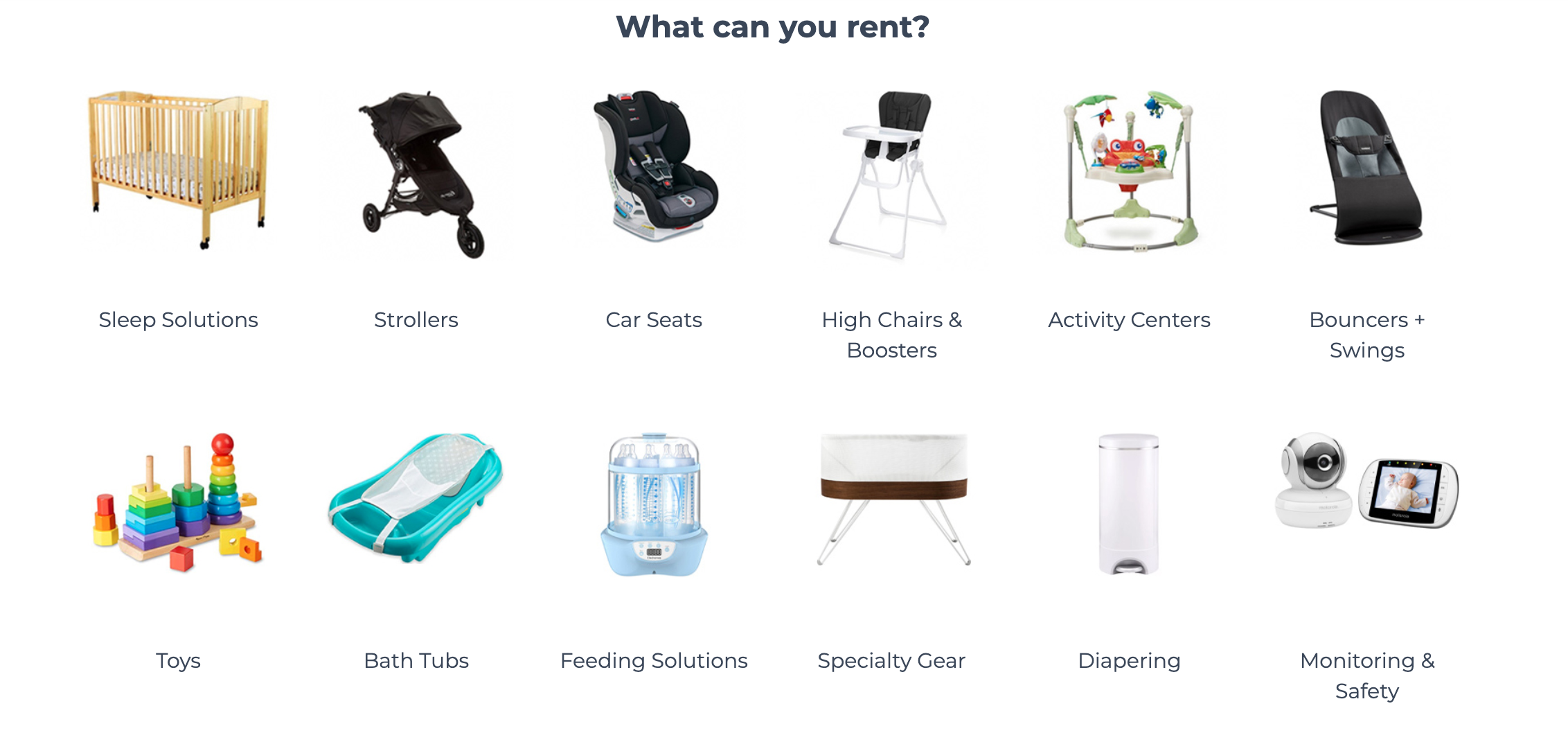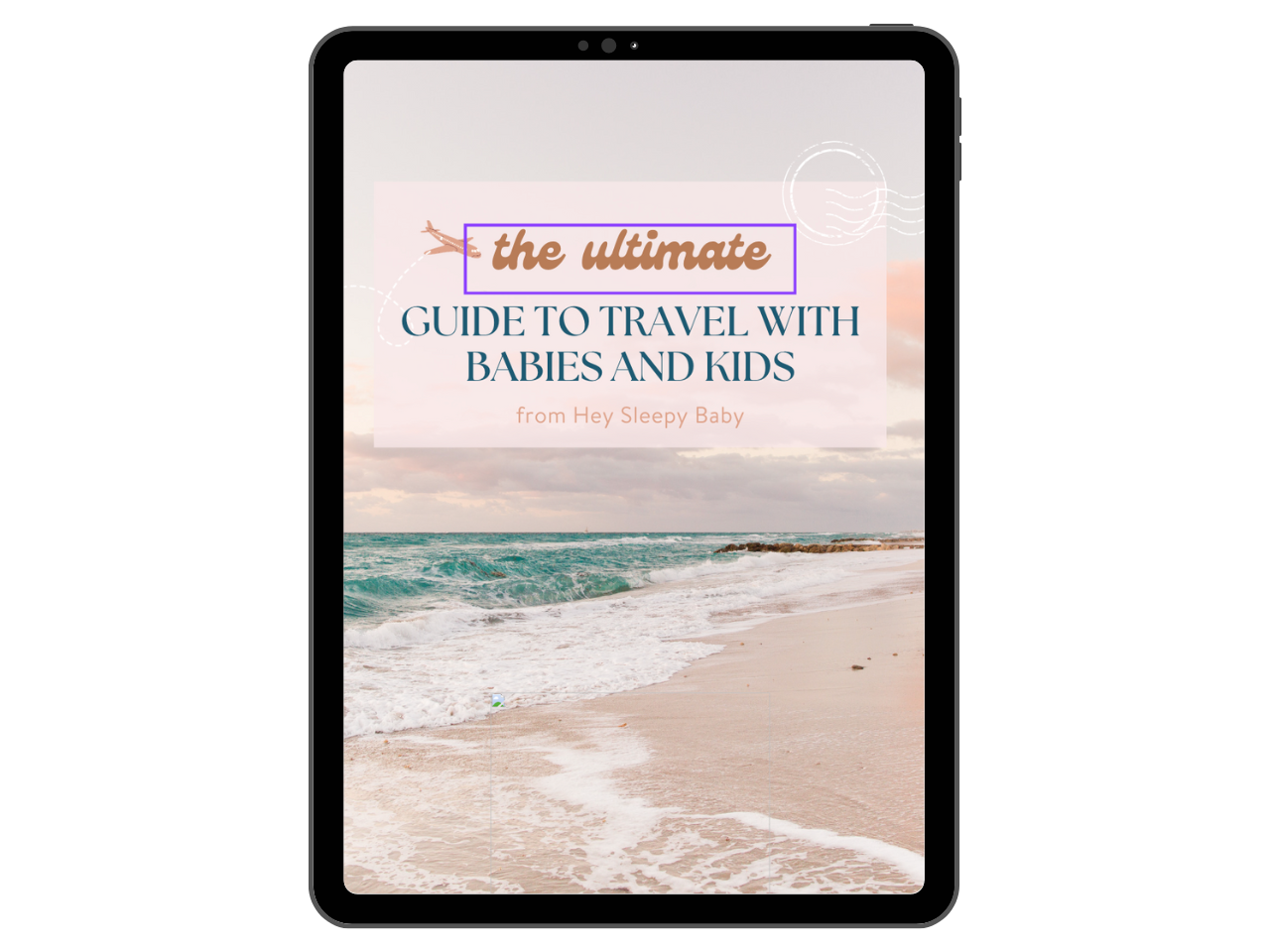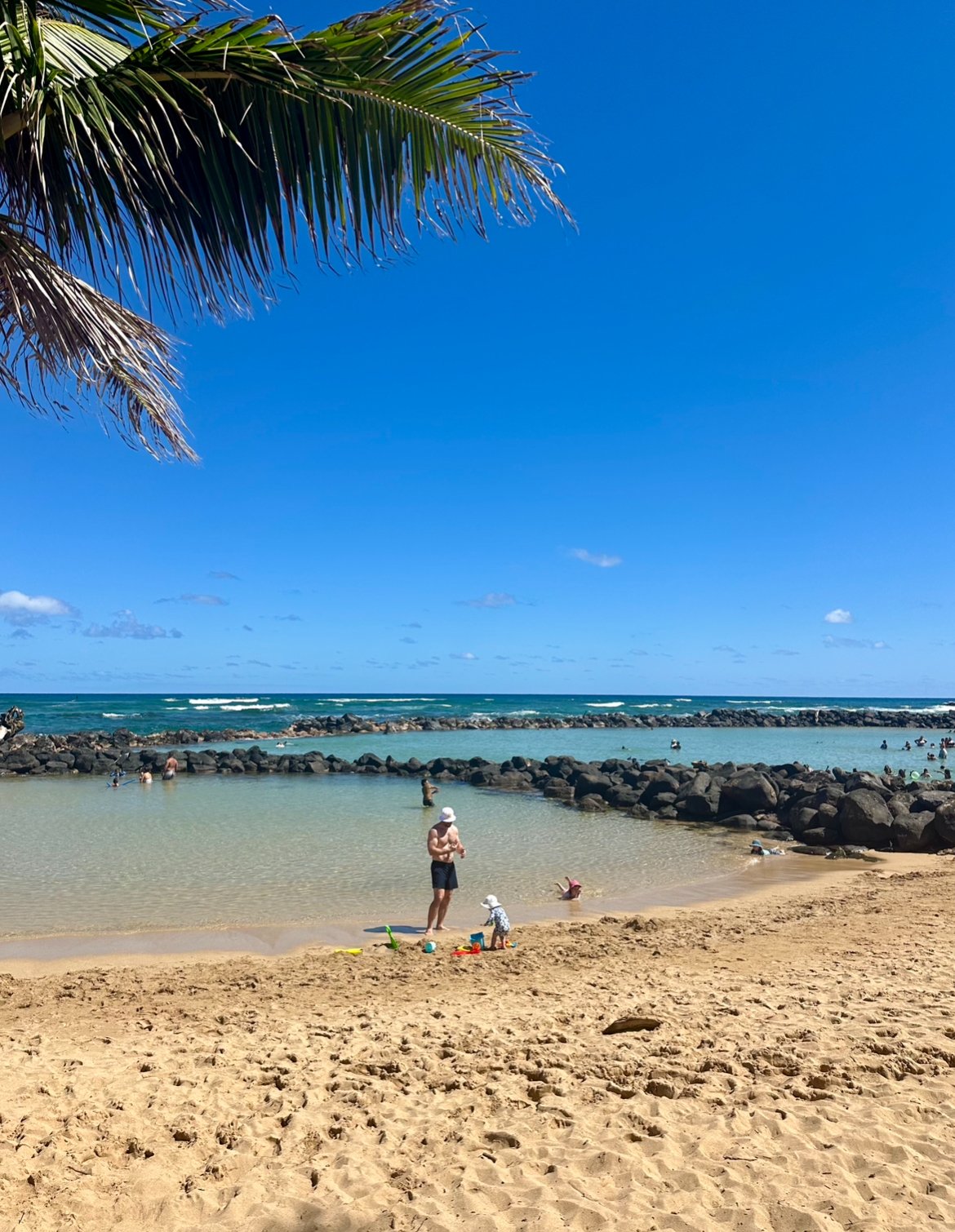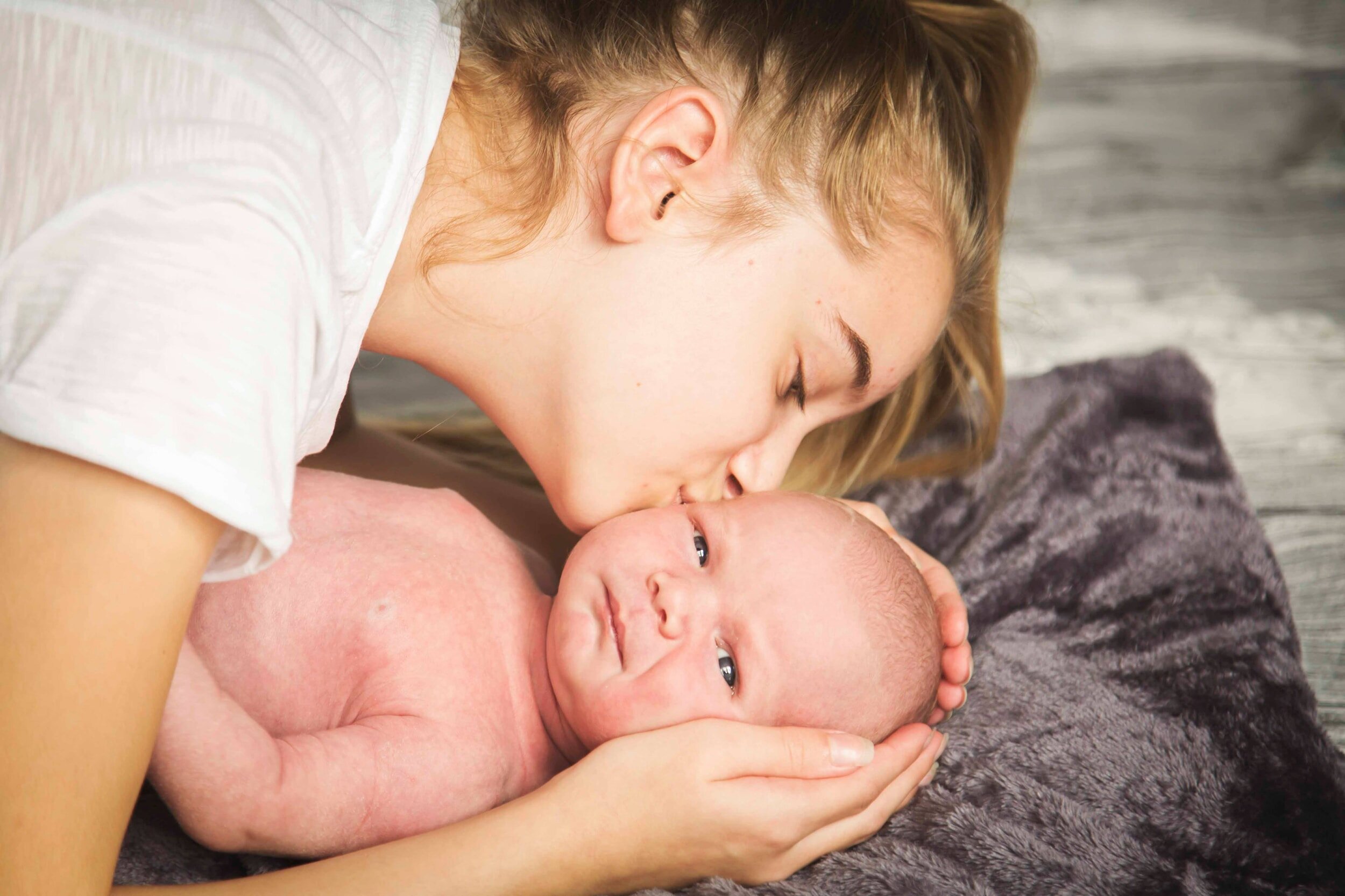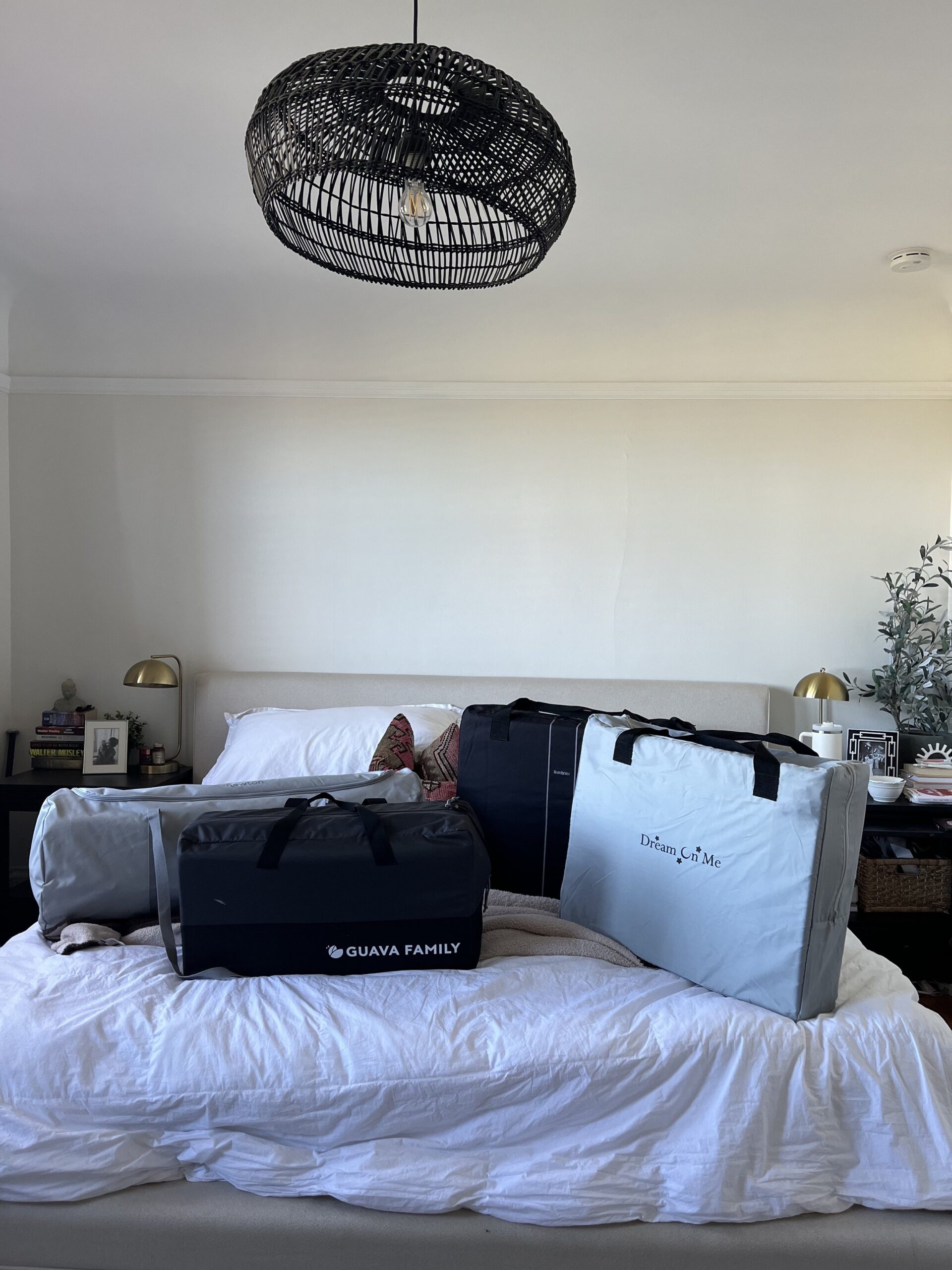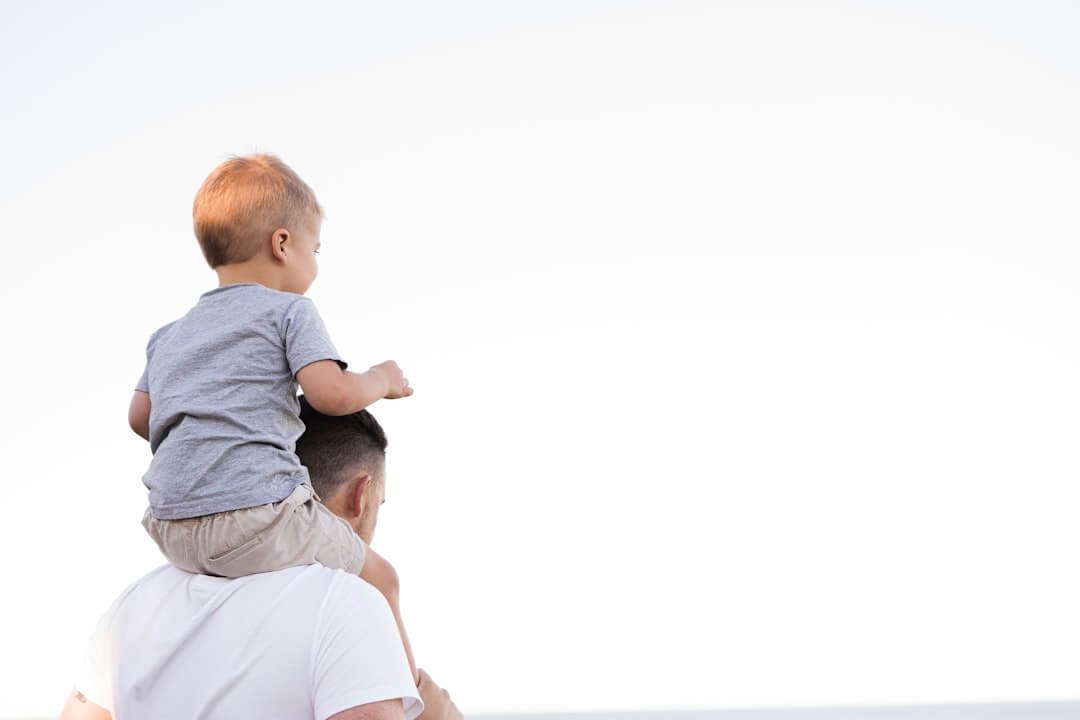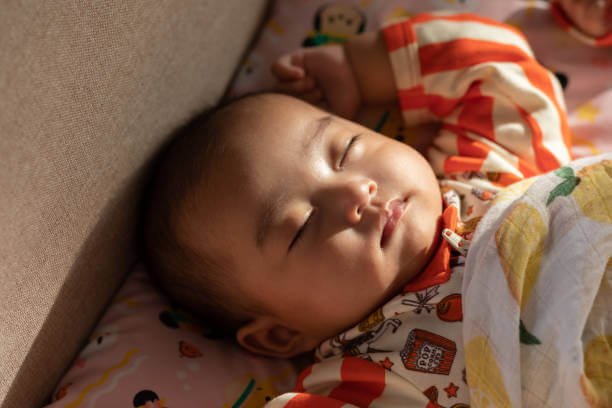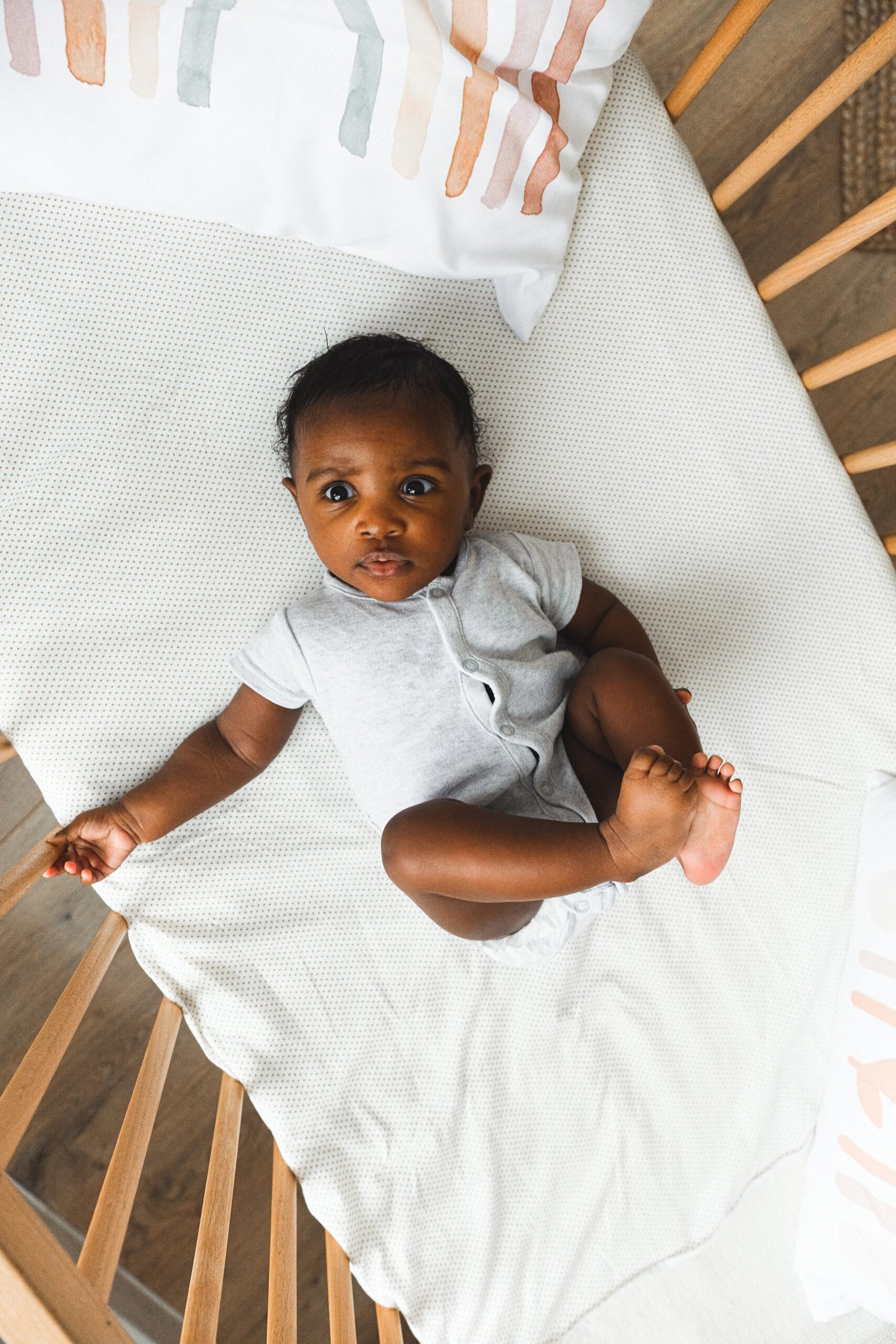I'm Rachael
Mom of 3 & Baby Sleep Expert with Big Sis Energy
& I’VE DONE ALL THE RESEARCH FOR YOU ALREADY.
Better sleep for the entire family
BROWSE COURSES
hey!
tips for travel with babies and toddlers
in this post:
Here it is pretty much EVERYTHING you could ever want to know about how to vacation like a pro with your baby or toddler. I’ve done it a bunch myself and I’ve asked my community of over 400k parents for their best advice.
Tips for Car Travel
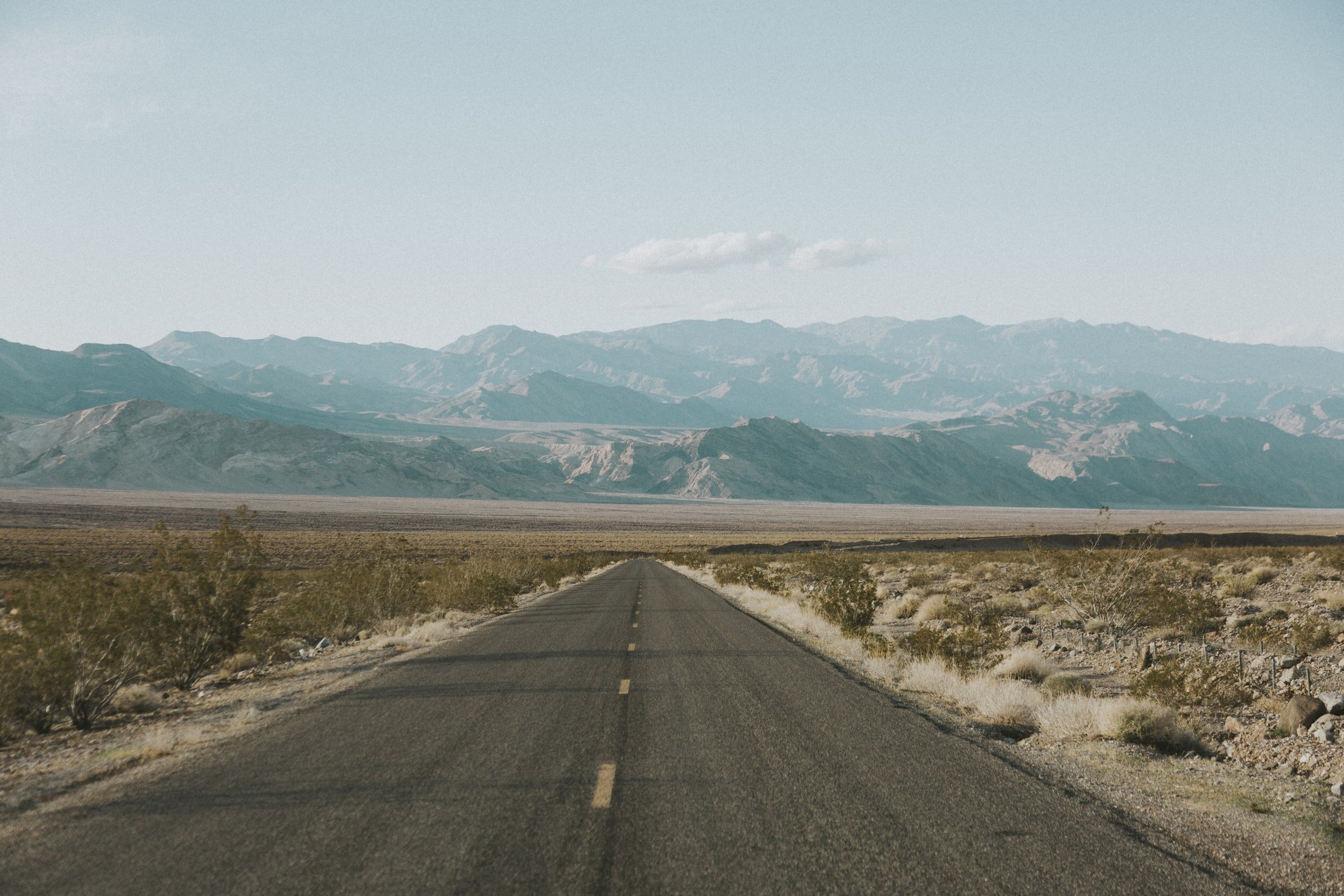
Road trips might feel like one of the most affordable, accessible, low-fuss options for taking your first little getaway with your baby. Or maybe you just really love road trip life and want to expose your little ones to a fun new place! Road trips are a great way to go, mostly because it’s pretty cost effective AND you’re more in control than you are on public transportation. You can stop whenever you want to and don’t have to worry about how your baby does like you do when you’re in public. You can let it ALL hang out! So here are the top tips from both me and my IG community for how to make a long car trip easy peasy (or close!):
-
First of all is, of course, safety. You want to be sure your carseat is up to date, fits your child, and is installed properly. Rear-facing carseats are the safest option in most cases. Michelle @safeintheseat is an awesome resource for all things car safety with babies and kids.
-
It’s ok for your baby to snooze in the car, obviously! However it’s really important that you never leave your child unattended in their carseat, especially if they are asleep. Babies and young toddlers sleeping in a carseat unsupervised can be extremely dangerous. If your baby does fall asleep in the car, no problem! Just be sure to check on them regularly, and once you stop or arrive at your destination, move them to a flat, safe, sleep surface right away (or just wake them).
-
As far as napping on the go, this depends on how old your baby is, how many naps they take, and how well they tolerate being in their car seat. For shorter drives, like a few hours, you might want to leave about 30-60 minutes prior to their normal nap time. This prevents them from becoming overtired and fussy in the carseat. They have time to get settled, play and look outside a bit, and drift off close to the normal nap time.
-
For longer drives, you might want to use the above strategy as well, except when baby wakes from this nap you’ll want to take a break. We don’t want our babies to be in a container for too long if we can help it, plus it’s not the safest to feed them while they’re in the car seat. After a couple of hours, you might need a break too! After you get some time out of the car, get everyone fed, a diaper change, and some time to move and play, you can start the next leg of your journey.
-
For REALLY long drives, consider leaving at night if you feel you and/or your partner can stay awake and drive safely in the dark. Leaving close to baby’s bedtime might be the best way to ensure they’ll sleep for most of your drive. You’ll have to prepare for them waking up when you arrive though, and it could take a while to resettle them. You also don’t want your baby (especially under 6 months) to be sleeping in a carseat for longer than necessary. If you’re going to use this option, with baby sleeping for a long duration, I would insist that someone can sit next to the baby or at least frequently check on them to be sure they’re ok.
-
Get your hands on some soft toys for baby to use during the drive. You want things that are soft so they won’t be a safety risk in case of an accident. These crinkle books are perfect!
-
Snacking while driving isn’t really recommended because of the choking risk. However you could offer things like pouches with a Soft Sip valve which makes it pretty much mess free! For everything else, it’s better to pull over and snack on a break.
-
Another thing that can make your baby more comfortable in the car is their car seat fitting properly. Many babies actually feel more comfortable in a convertible seat vs. an infant seat- especially if they have body tightness, reflux, etc. A visit to a trained chiropractor can also really help babies who are chronically uncomfortable in their car seats!
-
Music or audio books can be an awesome way to keep your baby calm in the car. I especially love playlists that are classical or soothing spa music, and I know lots of babies that just LOVE listening to Taylor Swift (test out my Taylor Swift playlist the HSB community swears by)! Practice a few different stations before your trip to see what your baby will vibe to. For toddlers and older kids, audio kids books or kids meditation app tracks are really nice!
-
If you’ll be driving in a lot of heat, you’ll want to be sure your baby can stay cool. The Noggle is a safe option to keep your baby from overheating.
-
If you’ll be pumping on the drive, I LOVE my hands-free pump (I use the Elvie). You can also buy a car adapter for most any electric pump you have!
Tips for Airplane Travel
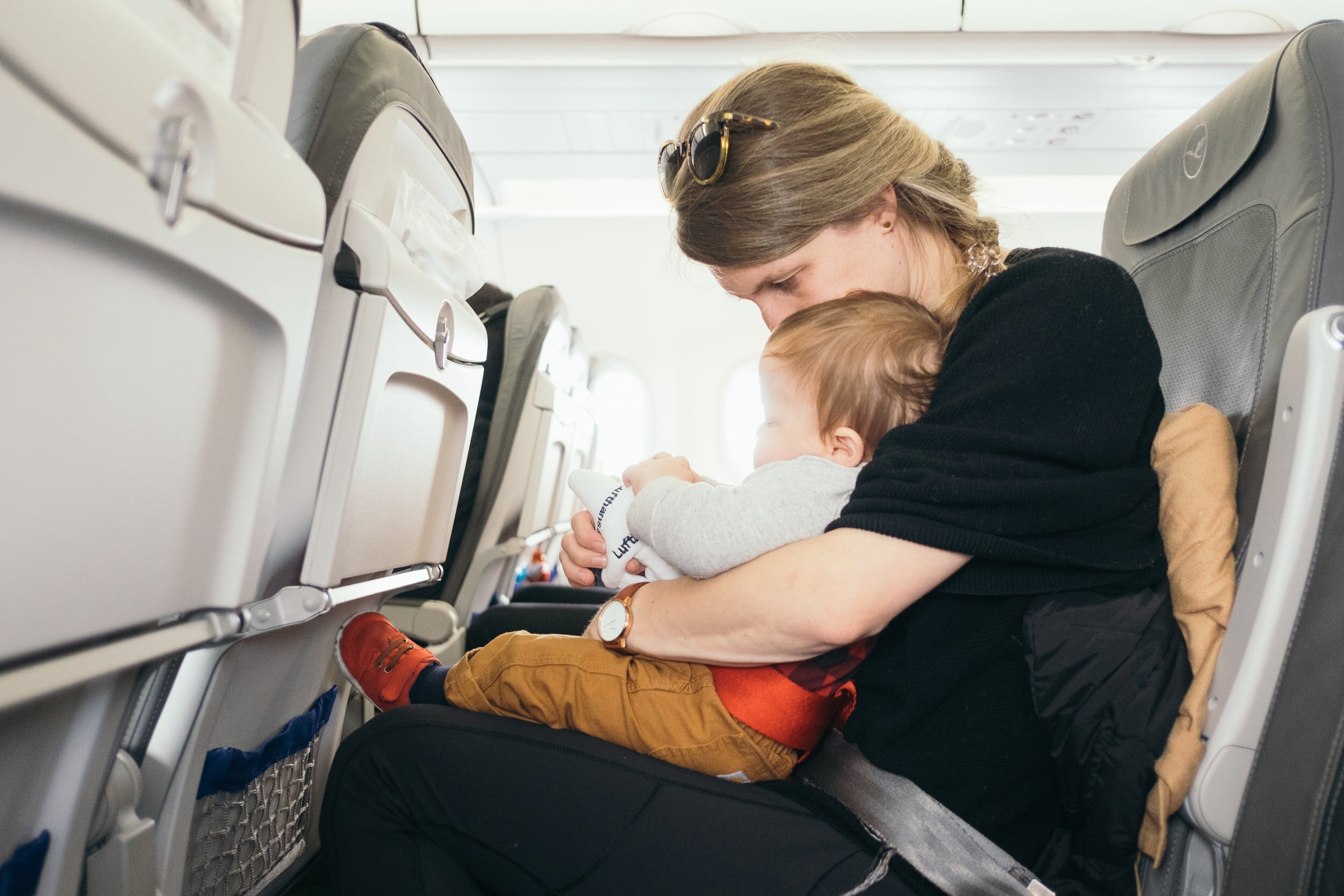
If you’re going to be flying for your travel plans, it can be really intimidating to think about all the things you need to do to prepare. I’ve broken it down for you below!
Before you Fly:
-
Book your tickets. Some airlines offer special infant fares and rules on lap infants can vary depending on where you are traveling. Check out this article for some helpful info on this.
-
Decide if your baby will be getting their own seat with a car seat or be sitting on your lap. While it’s more cost effective to have a “lap infant” and you can do this for any child under 2 years old, it’s the safest and sometimes most comfortable option to have your baby or young toddler in their own seat in a car seat. The reason we love to use car seats on the plane when we can (it’s an extra cost, I know!) is because baby is safer in there and more likely to fall asleep. We’ve had really good luck with my son being in his carseat on the flights we’ve taken him on (up to 6.5 hours!) because he’s restrained and used to the feeling of being in a carseat and even sleeping in one.
-
Car Seat Prep: We have always used a special travel car seat that’s much lighter than our everyday one at home- the Costco seat. In general, a convertible seat like this is going to be pretty comfortable for babies as well as toddlers.
-
Be sure you’ve set up the car seat to fit properly and that your child has been in and out of it before you travel.
-
Consider how you will carry the carseat. You could use a strap like this to attach to your suitcase and wheel around the airport. You could also use a carseat bag with backpack straps. You might also have a car seat that clips in and out of your stroller.
-
Sometimes the rules will seem like they are different depending on what airline you are flying and where you’re located. It’s good to know your rights when it comes time, just in case. Here’s a great resource for all things carseats on a plane!
-
-
Breastmilk/ Formula Prep: Depending on where you’re flying the rules might differ a bit. It’s a good thing to research your airline or airport terminal to see what the recommendations are. Here’s what the TSA says about traveling with breastmilk and formula. Here’s an amazing travel guide for pumping mamas! You can also use this free app Mamava to search for Breastfeeding/ Pumping Pods based on airport.
-
If you’re going to be pumping and traveling with your expressed milk, a cooler is a must. Fore example, this one stays super cold and can fit your Madela bottles. A Yeti is a great option for very long flights with lots of frozen milk, and the backpack option makes it easy to carry.
-
You also may want a way to heat up a bottle for your baby while you’re traveling. This bottle warmer is perfect for on the go!
-
If you’re using formula, an easy dispenser is a must!
-
4. Get your documents in order. Here’s a post on which documents you’ll need for a lap infant. For a child in their own seat and/or children over 2, you won’t need to show ID, however we usually travel with a passport or copy of the birth certificate just in case! For some airlines and flights (like international) you’ll need to purchase an infant ticket even for a lap infant. Always check your airline’s website for these rules.
5. Pack! I know this one can seem the most daunting. In my free travel guide, I include a packing checklist for you to remember everything! One thing I highly recommend using is packing cubes! Packing cubes make it so easy to organize items for each family member or by type of item (I always do one large cube per person, then all toiletries in another, chargers/ electronics in another, swimwear in another, etc.). You can also bring a couple of empty extras if you plan on shopping on your trip, or to keep dirty laundry separated from your clean clothes.
It really depends on what you’re doing, where you’re going, and what the weather will be. There are a few things you definitely don’t want to forget though. Here’s what I recommend being in your carry on just in case your checked luggage is late or goes missing (it’s happened to me!):
-
Breast pump parts and accessories, plus cooler bag, cleaning wipes, chargers, etc. or formula to last at least 1-2 days
-
Extra outfits- at least 1 for you and 2 for each child
-
SNACKS- seriously cannot stress enough how many snacks you need. Think of how many sounds reasonable. Now double it. That should get you through until you board.
-
Phone charger, wallet, ID, etc. in a fanny pack (or belt bag as Gen Z call them)
-
Baby wipes and extra diapers (at least 1-2 days worth)
-
Carseat accessory (backpack, strap or gate-check bag)
-
Stroller/ stroller bag (if you’re bringing one)
-
Few things to keep them occupied (more on this below!)
6. Arrival at the Airport: when you get to the airport, you will probably have bags that you check and bags you want to carry on the plane.
-
Be sure to go back to #5 for the things I recommend for your carry-on luggage.
-
A pump does NOT count towards your carry-on allowance for most airlines, but a cooler will. So bring your regular carry on luggage, but be prepared to explain several times that your pump is a “medical device” so that you aren’t hassled or charged for an extra piece of carry-on.
-
You may check your carseat with your checked bags, however being tossed around in the underbelly of the plane can compromise the safety and make your seat less safe after the flight. I recommend taking your car seat with you up to the gate. If your child won’t be using it on the plane (like for a lap infant or older child) you can ask to gate check it.
-
HOT TIP! Sometimes even if you don’t pay for an extra seat and plan on your baby being a lap infant, flight attendants will allow you to bring the car seat on board at no extra cost if it’s not a full flight. Worth a try!
-
You may check your stroller if you don’t want to use it in the airport. However there are several great travel options that you can use all the way to the gate and even onto the plane! Again, you can gate check the stroller or bring it on board and fold and stow it in the overheads.
-
If traveling with a baby, I recommend wearing comfortable pants and easy slide-on slide-off shoes like a comfy pair of slide sandals or sneakers. You might want to wear a nursing tank or a low-cut shirt if you breastfeed. Place your baby carrier over your top. Then you can wear a loose open cardigan over top of your carrier. This allows you to easily take your cardigan on and off as the temperature changes, you can use it as a blanket or cover your baby with it, etc.
-
If you’re pregnant I highly recommend wearing compression socks while on the airplane, and getting up and moving around every so often, walking the aisle, and massaging your legs. You can also opt out of the security scanner if you’re pregnant- just ask!
While you Fly: Tips for Keeping Busy on Board
Before you board, let your child crawl or run around the airport to burn off energy. I know it might seem gross but you can wash their hands afterwards or pack a bunch of hand sanitizer travel-friendly hand wipes. Usually airlines will offer “family boarding” which means you are the first to get on the plane. However, this adds about 30 minutes to the time your child needs to stay seated or restrained. I recommend getting on at the last possible moment. If that seems stressful and you’re traveling with a partner, have them get on with all of your luggage to get set up. Let your baby run around, and get in one last diaper change. Then you and baby get on with the last group to board.
I find babies in the 8 month- 16 month range to be the hardest to fly with because they need more entertainment and really want to move, but they can’t yet be entertained by screens, books, or coloring for very long. Newborns and younger babies typically sleep much of the time because they’re lulled by the motion and sound. Older children, even toddlers, can watch movies or shows or play games. I like to bring the kid’s Kindle Fire pre-loaded with my son’s favorite shows downloaded so we aren’t reliant on Wifi. We use these headphones for him which are pretty comfy and won’t fall off.
How to keep baby entertained is usually what parents worry most about when getting ready for a long travel day (or two) and I totally get it! The first time we ever flew I packed home-made crafts, toys, the works. My son? He played with plastic cups and pretzel bags the whole time. The next trip we took I packed smarter- and remembered that airports and planes are SO new and novel. Your little one will be so excited just to explore what’s already available to you in your seat, but you might want to bring backup. Novelty is KEY. Keep any new items a total surprise until you’re ON the plane.
-
Soft busy books or Indestructible books- lightweight and easy to pack (great options for long car rides as well!)
-
Sticker books or painter’s tape. Let your baby or toddler go wild with fun NEW stickers (novelty and “specialness” is the key here!) or just bring a roll of painter’s tape and let them practice peeling it on and off the seat in front of you or another hard surface.
-
Coloring or mess-free painting can also be a fun activity for toddlers, especially if it’s something new. Other kids might enjoy a small set of magnetic blocks, play-doh, or another craft.
-
Of course if there’s any “lovey” or really special object, toy, or security item for your child, you should bring it (and maybe even a back up just in case!).
-
Snacks, snacks, snacks. Seriously. Did I mention to bring a ton of snacks? Keep them in a fun container that doubles as entertainment and you’ve got yourself a solid 15 minutes.
Tips for Sleeping While Flying
You’ve got a few options here and it depends, again, on how old your baby is, their temperament and normal nap schedule, and how long your journey will be. In general:
-
If your baby is a lap infant, you can wear them in a carrier all the way up until takeoff. You can usually request keeping baby on your body and going through the standard metal detector vs. the scanner, or having a female agent check you. I like to have soft style wrap like the Ergobaby carrier or the Baby Bjorn for little babies, and this mesh option is especially nice for warm destinations! For take-off and landing most flight attendants will ask you to remove baby from the carrier and hold them, so plan accordingly.
-
Allow baby to nurse, bottle feed, or use a pacifier as much as they want, but especially during takeoff and landing. This can help their ears to adjust to the pressure. If your baby will be in their own carseat, they’ll need to remain in the seat strapped in during take off and landing and when the “fasten seatbelt” lights are on. You can offer a pacifier or attempt a bottle feed to get them sucking as you ascend and descend.
-
If you have a newborn-12 month old as a “lap infant” without their own seat/ carseat and you don’t want to wear them for your entire flight, you can purchase a seat in the front bulkhead where you can request a bassinet. However, don’t assume this will be an option without looking into it well before your trip. You’ll want to call your airline to be sure these are available or check it out while you book your trip. You can check SeatGuru to see how many are available on your flight/ with your seat (if at all).
-
Remember that this is likely a new experience for your baby and you! So while you can add in sleep associations that they are comfortable with- like holding/ wearing, feeding to sleep, a pacifier or special blanket, or even their PJ’s and sleep sack, they might not sleep as much as you’re hoping they will. Or they might sleep a ton! Bottom line, you can try and obsess about wake windows and nap times or you can go with the flow and remember that you’ll get to your destination far less stressed. Your baby, for the most part, will sleep when they need to.
-
To plan your trip, it depends on how far you’re going and if you want layovers or not. I think this is a personal choice. We’ve done red-eye flights with my kids, and we’ve traveled during nap times. I haven’t ever noticed a huge disaster one way or another- you have to just know your child and have really realistic (and low!) expectations for how they’ll sleep during travel.
tips for Camping
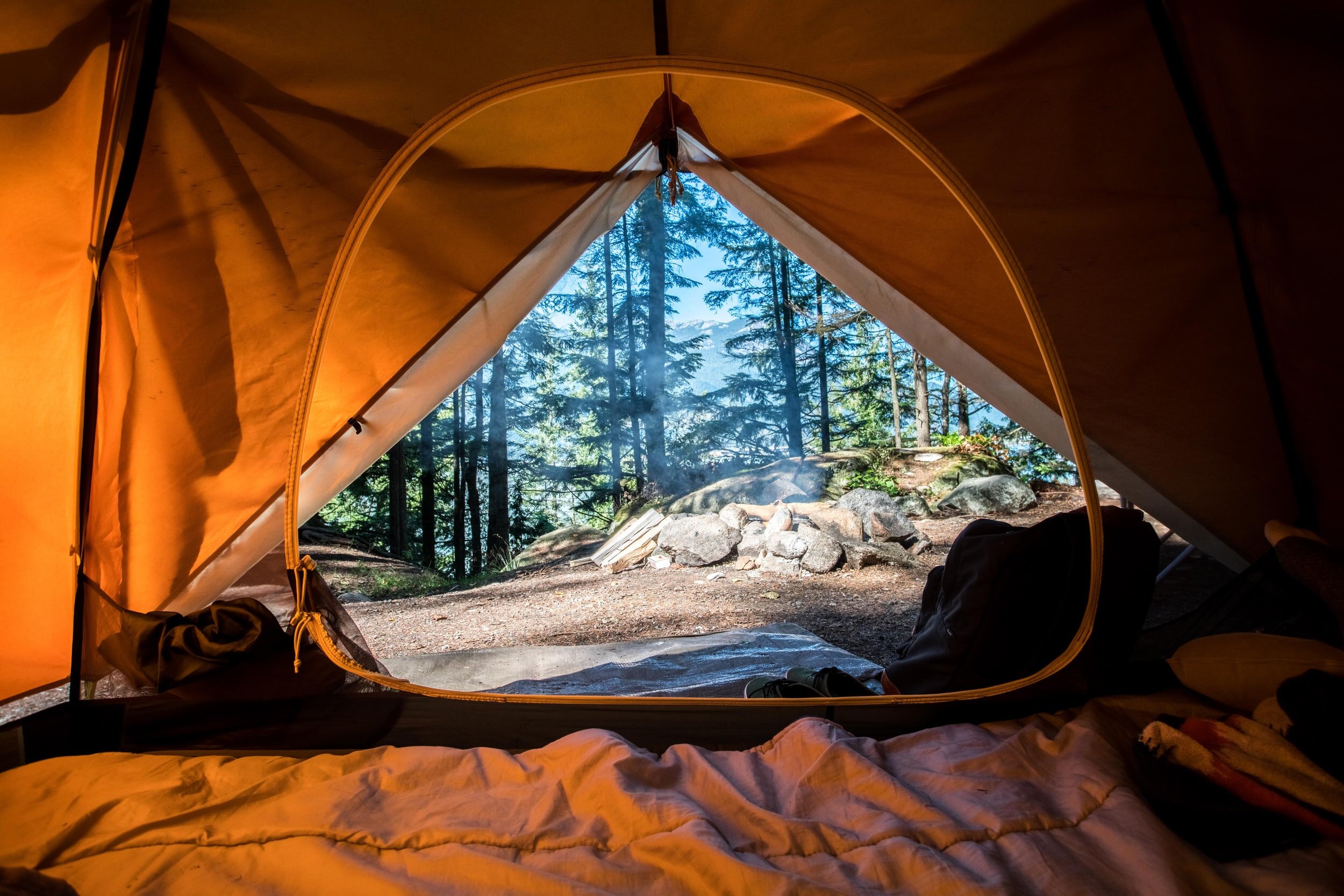
If you’re camping and worried about cold weather, try out the Morrison Outdoor baby sleeping bags! An awesome resource to checkout for really adventurous outdoorsy families is Wildkind! They even have a Camping with Kids Course.
The biggest things to consider when you’re camping is of course safety. Always be sure that your baby is warm enough but not overheating, be sure you pack extra batteries, chargers, etc. in case of emergencies, and set up the sleep space keeping safety guidelines in mind.
Tips for the Beach & Pool
-
For the beach and pool, I like to have some sort of shade option so I don’t have to slather on sunscreen every 20 minutes. We use this fold-up tent and it works great!
-
I love to use a makeup brush to apply sunscreen, especially to my kids’ faces. It tickles and they think it’s the most fun ever. My favorite clean & reef-safe sunscreen is from babo botanicals.
-
Use a talc-free baby powder to remove sand from sticky babies. And keep a jug of water in your car for easy rinsing after the beach.
-
For sleep while at the beach or pool, I really recommend some shade if possible, either under an umbrella or a tent. You may bring a bassinet or even your pack’n’play if your baby is small enough so that they’re contained and off the ground. It’s also a great time for a contact nap!
-
You may also stroll your baby a bit to help them fall asleep. Always be sure that your stroller is locked while on a pool deck!
-
If you want your little one to be able to splash around but not in the big pool or ocean, you can bring an inflatable pool! Just be sure they’re still always supervised. Drownings can happen in as little as 2 inches of water. Taking a CPR course (lots of online options!) can also be the best thing you’ll do to prepare for summer vacations.
-
Anytime you’re going to be near a body of water, especially if there is no fence and your little one is mobile, you need to be constantly aware of where your child is. Don’t assume someone else is watching them- this is how many accidents involving water can happen. Be sure that your child is always supervised, and that there are locks and child-proofing on every exit (don’t assume your child can’t open the door!).
-
If your little one is a frequent pooper, a swim diaper that’s disposable might be the easiest way to go. We’ve always used reusable swim diapers and absolutely love them! The side snaps make it really easy to take them off. Newborn poop is water soluble, so very easy to rinse away and can be thrown right in the washing machine poop and all! For older babies or toddlers, you can get poop off as best you can and dump it into the toilet, then wash the diaper as directed. Again it depends how often your child “goes” regularly, but we’ve always been fine with just 2-3 diapers per kid, and travel with a few of the disposables for just in case situations!
-
Here’s what I pack in our beach/ pool bag:
-
a couple of swim diapers per kid (we love the reusable ones under swimwear!)
-
baby wipes
-
baby powder (talc free) to remove sticky sand (for big kids only- can be harmful to little baby’s lungs if inhaled!)
-
makeup brush with sunscreen lotion, plus sunscreen stick for quick re-applies
-
sun hat for each kid
-
cold water bottles
-
snacks (duh)
-
-
And for a full-day beach trip we also bring:
-
sand toys
-
fold up tent
-
beach chair (if we will be there all day) for baby
-
cooler for lunches/ breastmilk etc.
-
For the most fun part, check out my pics for baby girl and baby boy swimwear!
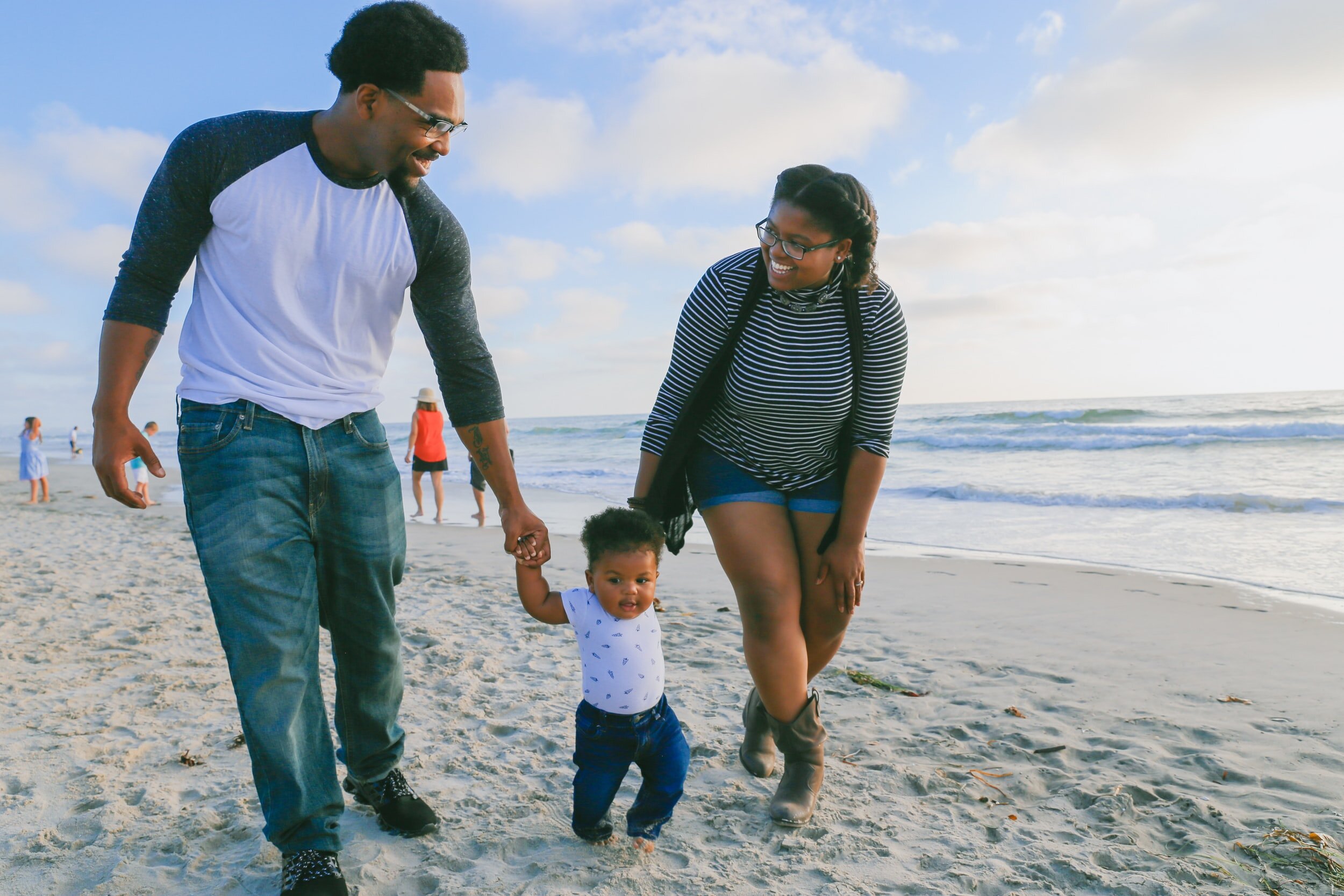
tips for When you Arrive at your destination
When you arrive at your destination, you’ll want to set up baby’s sleep space. Make it feel as close to your home as possible. If you’re using a playard/ travel crib, bring the same sheets you have at home. Use the same sleep sack, and bring your child’s favorite lovey or soft toy if they use one (older babies 12+ months only). Let them use their pacifier if they like to have one.
-
Use white noise! It’s best to place it between baby’s sleep space and whatever might cause noise disturbance (like the front door, hallway of hotel building etc.).
-
Use travel black-out blinds or black sheets to cover the windows. Do NOT use black garbage bags- they can off-gas into the room when heated by the sun. Make sure you bring some binder clips, push pins or packing tape so that you can secure the sheets to the window frames if you’re going that route.
-
Set up your monitor if you’re using one. You may get an inexpensive audio-only monitor for your trip if you plan on baby sleeping in a separate space, or if you’d feel more comfortable seeing your baby you can bring your video monitor from home.
Consider Renting!
You can use a service like Babyquip to rent pretty much any item you’ll need. We used this service on a trip to Colorado to have a crib, monitor, high chair, even toys all delivered. It was so easy and made packing that much less stressful.
Crossing Time Zones
If you’ve crossed time zones, give it some time. When we went to Hawaii with my son at 18 months we were up for the day at 3am for the first few days. It was not super fun but we did get to see the most amazing sunrises! It’s all about perspective, right?
-
If you are traveling across timezones, know that for babies going East can cause worse jet lag than going West (for you too!).
-
Traveling long distances can also cause changes in baby’s digestion- so don’t be surprised if they are feeding differently and have less frequent poops, or more than usual blowouts.
-
If you are going away for a week or less and crossing less than 3 timezones, keep your baby on a schedule as close to home as possible. You can shift bedtimes/ naps 15 minutes at a time for a few days before leaving to help them start to adjust. A travel blackout blind like the Sleepout Curtain can help create a dark bedroom. Use “heysleepybaby” at checkout for 10% off.
-
If your baby is younger than 12-16 weeks, they don’t produce their own melatonin yet, so the light/dark differences might not affect them as much as older babies. I always say it’s SO EASY (not actually, but compared to a 16-month old it is!) to travel with a newborn, and this is one of the biggest reasons.
-
Try adjusting your baby to the new timezone on your first FULL day there rather than doing it gradually. Use daylight and darkness to help cue them (again, works best with babies older than 3 months).
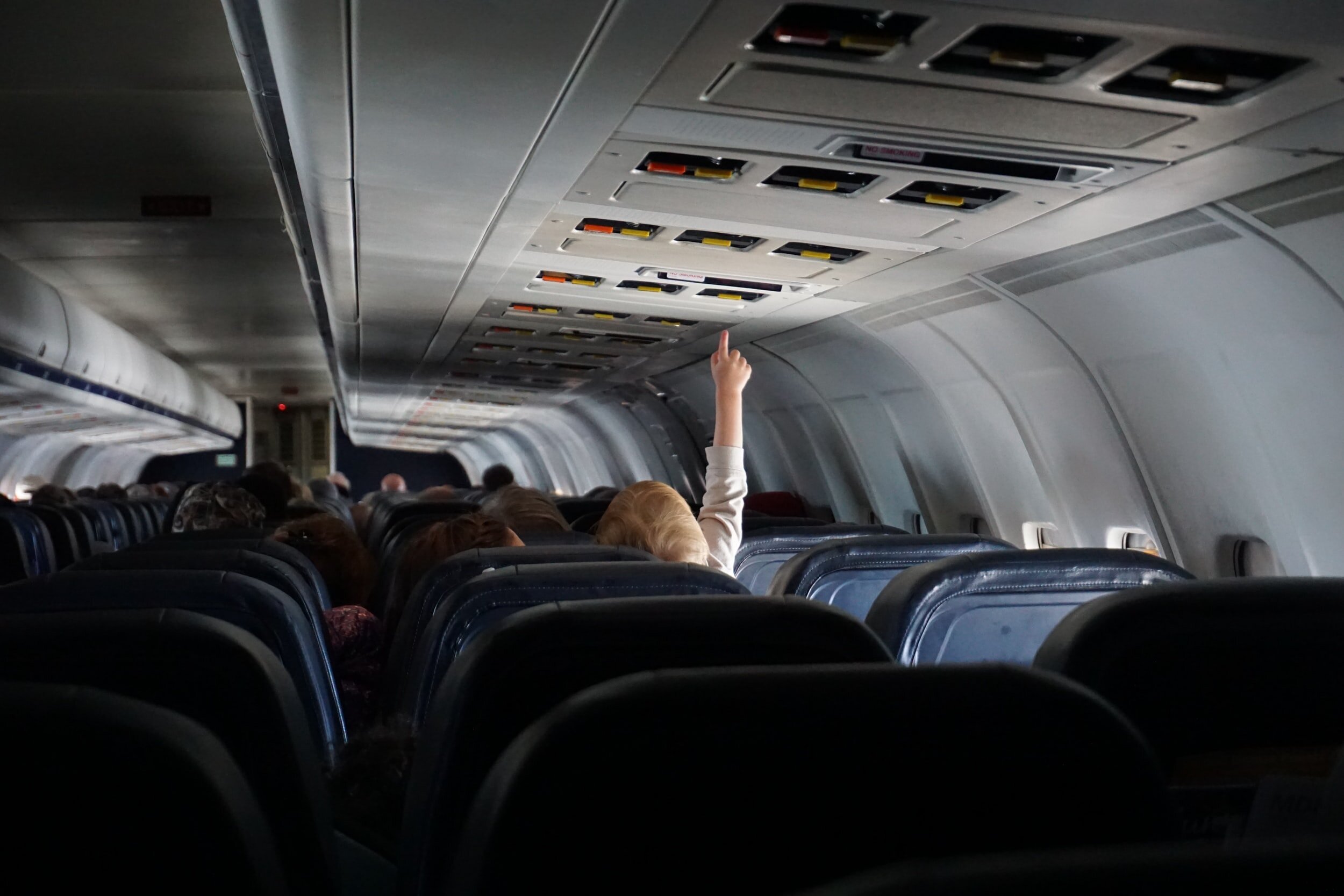
Remember that babies and young children are just little people. It usually takes us several days to adjust to new time zones and to get over jet lag, right? Try and go in with very low expectations for how sleep will go in the first few days while you all get caught up. Try not to schedule any really busy days until you’re on day 3 or 4 at the earliest.
Safe Sleep Sleep While on Vacation
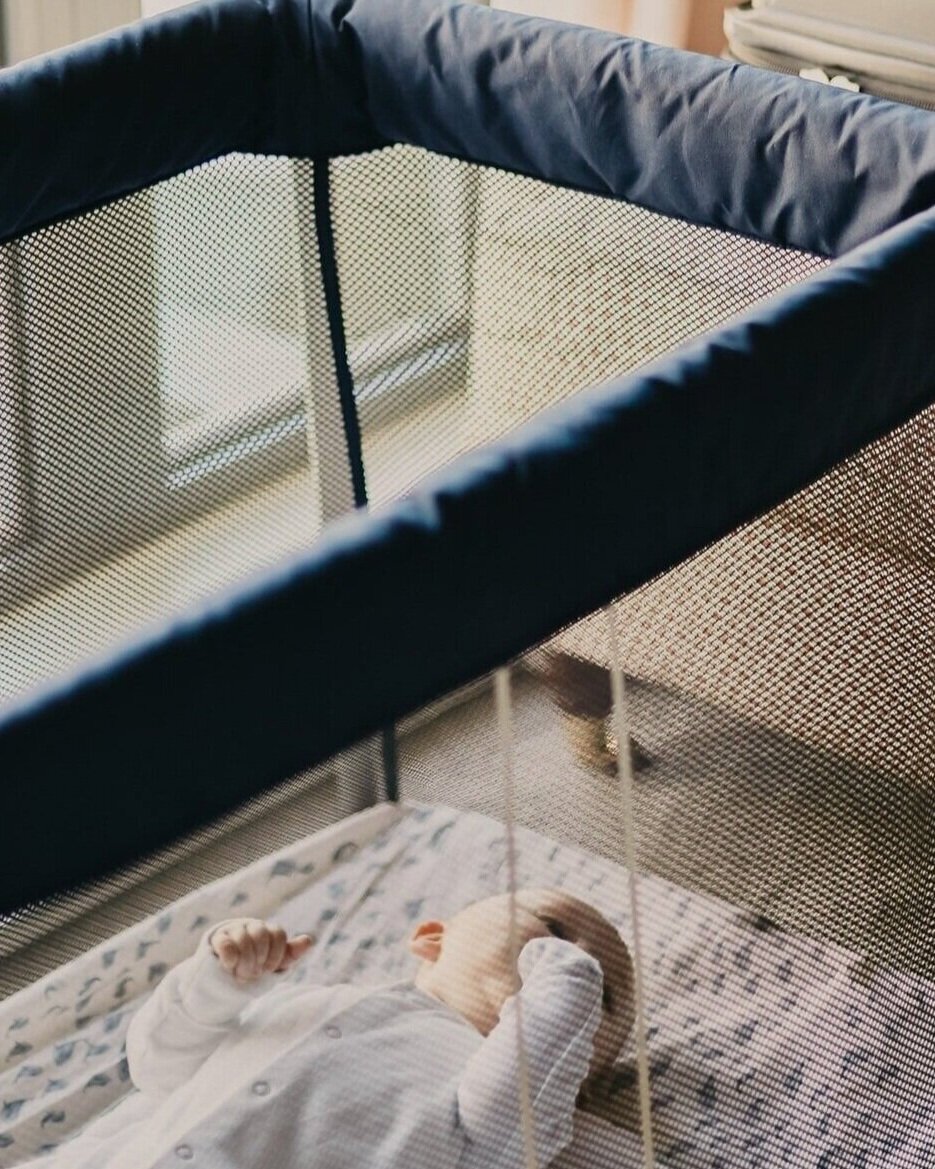
Safety First
Set up the baby’s space away from hazards like hanging blind cords or wires. Keep the crib away from anything that could fall or tip over, and make sure there’s nothing they can reach for if they stick their arms out. This all sounds very obvious but we can sometimes forget that we didn’t set up this room for safety ourselves like we do at home- so we need to double and triple check!
-
No matter where your child will be sleeping- practice if you can! Try setting up the pack’n’play or whatever you’ll use in your baby’s normal sleep space (like your room or their nursery) and try out a nap in there up to a few weeks before you leave. Bring your own sheets, sleep sack, etc. so that they’re familiar- and maybe even sleep on them yourself for a few nights so they get your natural scent on them.
-
The regular pack’n’plays are great and super functional if you want to bring your own sleep space for your baby or toddler. My son fit in this until he was 3! They usually travel free as a carry-on too! Another great option is the Guava Lotus. This one is special because it allows for the side to open. So if your baby really needs your support you can side-lay nurse before rolling away, or you can lay next to them and rub their head or keep your hand on their chest until they fall asleep. For a full review and comparison of different travel crib/ playard options check out this blog post!
-
For toddlers who are used to a floor bed, you can grab a travel cot like this one. If you’re staying at a hotel or another type of accommodation, you could also request a crib and take the crib mattress out to set up on the floor. Always supervise your child when they are sleeping in a new space. Risks for sleep accidents increase while we travel because we don’t take the same safety precautions.
-
If you’re not taking your own sleep space and will utilize a hotel-provided crib, be sure to call and ask which model they provide so you can ensure it’s not recalled. Here’s a really handy checklist for determining crib safety.
-
If you plan on cosleeping while you’re on your trip, be sure you’re following the Safe Sleep Seven guidelines.
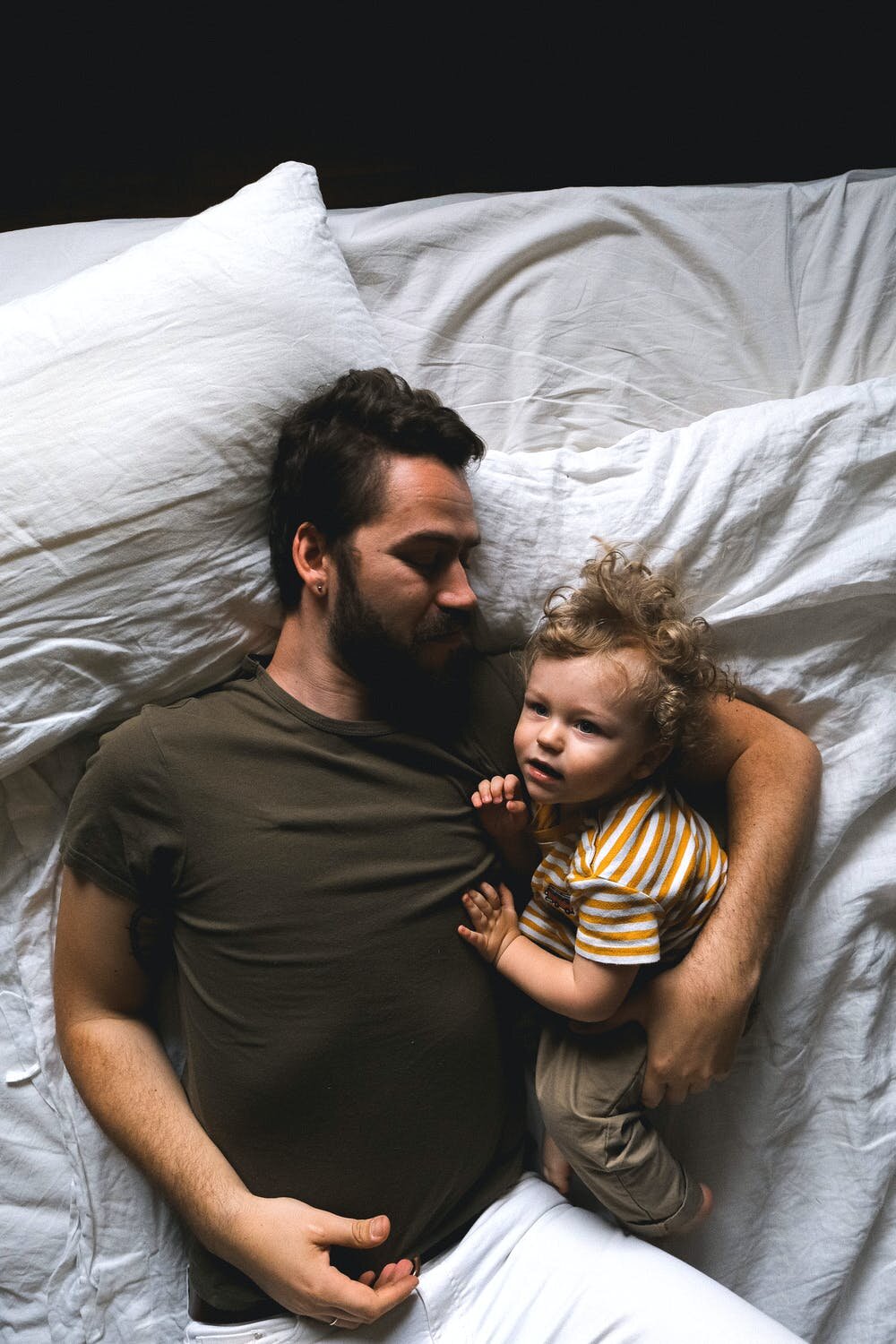
Bed Sharing
To bed share while on vacation, if it’s outside of the norm for your baby, they might think it’s just fun play time and have a hard time settling. In this case, you’ll want to consider pushing bedtime back a bit, so that they’re going down for bed pretty darn tired! More on bed sharing below.
-
Allow baby to sleep on the go, as motion and contact can help them fall into a nap when you need them to. Use strollers, carriers, or nursing to help baby fall asleep while you walk around or hang at the beach. Remember that sleep while on vacation won’t be perfect and that’s ok! Your baby will adjust. It’s better to have a relaxed parent than a perfectly timed nap.
-
Even if the timing might be different, keep your bedtime routine as close to normal as you can, but know baby might need extra help to fall asleep especially if they’ve traveled time zones and/or if they’ve become overtired from not sleeping well on your journey.
-
Remember to offer plenty of time to wind-down after a lot of stimulation and activity. A bath might be a nice way to end each day, especially if you do a regular bath time at home. You can use a travel bath tub or just do a sink bath in your hotel room if there’s no tub. After the bath you might do some calming baby massage, read books, and sing songs in dim lighting. Try and put your baby to sleep using your normal sleep associations like rocking or swaying, or feeding to sleep.
-
For bed sharing safely, since you can’t necessarily control how low the bed is, I would recommend sleeping in the bed alone with baby if you can so that there’s more space and less risk of rolling off. You don’t want to bed share with the bed against a wall, as this could be a serious entrapment risk. Never sleep with your baby after drinking alcohol, smoking tobacco or taking drugs. If your baby is older (6+ months) and/or you can get a King sized bed, your baby might be safest between you and your partner so long as neither of you are obese. Follow the regular safe sleep seven guidelines as closely as you can.
-
The safest option for babies that don’t normally bed share (or if the sleep space isn’t ideal) is to have a separate space for baby, but keep it right next to your side of the bed so they still feel close to you. Above all, use your best judgement and follow the guidelines to the best of your ability.
Traveling with a baby, toddler, or both might seem really daunting and the idea of prep can cause a lot of stress and anxiety leading up to the day you leave. I won’t lie- it’s not a walk in the park, but it IS usually worth it.
Many of us haven’t traveled in a long time, or haven’t seen friends, or had special time as a new family since our baby was born! Traveling and making memories is a wonderful thing if you can do it safely, even if it’s different than traveling pre-kids. Try to go with the flow and enjoy it for what it is- a brand new adventure!
If you need more help figuring out how to get your baby to sleep in a crib in preparation for your travels, or if you need to know how to safely bed share while on vacation, check out the following resources:
Travel Guide FREEBIE! ✈️
For more travel ideas from me and my followers, follow along on my IG @heysleepybaby and be sure to check out my “travel” highlight for even more tips!
Featured
All my tips for travling with little ones, plus where we stayed, where we ate, what we did, what we wore while on the beautiful island of Kauai.
Choosing the right time to leave your baby is a super personal choice. Some babies and moms feel comfortable at a much earlier stage than others and finding the right time for you is important. These are my tips for prepping to leave your baby overnight.
Travel crib and play yards can provide a safe and comfy space for your little one to hang out or sleep. But which travel crib is best? In this blog post, Rachael reviews 6 different popular play yards and compares each one based on different criteria…
binge reads
We think you'll love these
You deserve to the
baby stage, not just "survive it."
And you DON'T have to sacrifice your values, ignore your instincts, or force yourself to follow a method you don't align with just to get your baby back to sleep.
I’m here to help you create a restful, sustainable sleep environment that honors both your baby’s needs AND your own (without the stress OR the guilt!) because, no, you don’t have to choose between the two.
enjoy!
BABY SLEEP COURSES →
BABY SLEEP CONSULTS →
Wish you could help your baby sleep better without resorting to sleep training? Download my FREE guide to a good night’s sleep and learn 8 simple, science-backed tips for supporting your child’s needs.
Traditional sleep training methods don’t have to be your solution to better sleep.
SLEEP TRAINING ISN’T THE ONLY WAY TO GET GOOD SLEEP
Hey, I'm Rachael and Hey, Sleepy Baby is for parents who want to get their nights back, without sleep training their babies.
NO ONE TOLD US POD
explorING the untold truths of parenting
